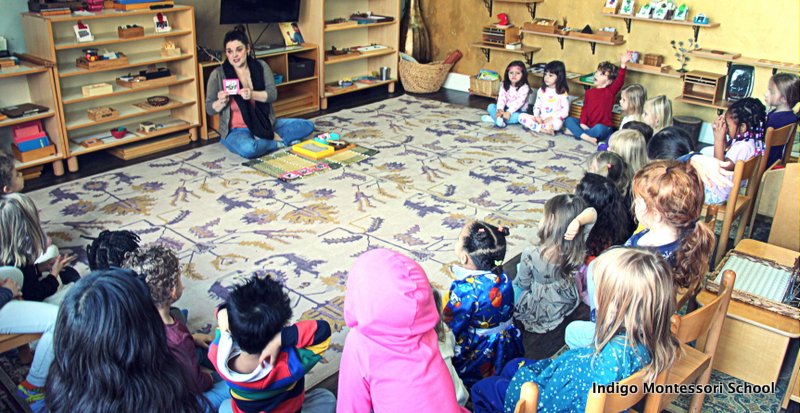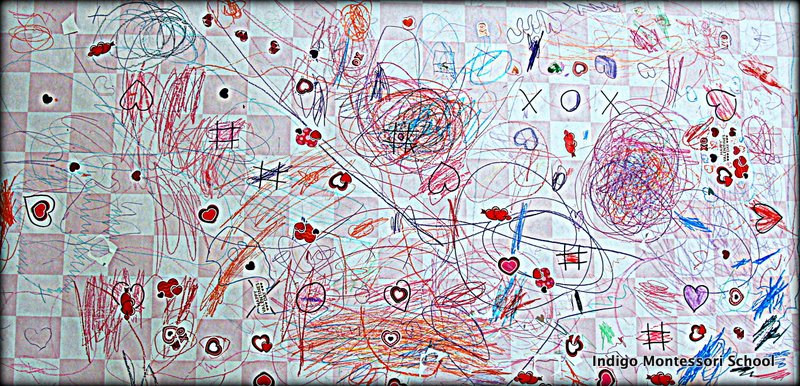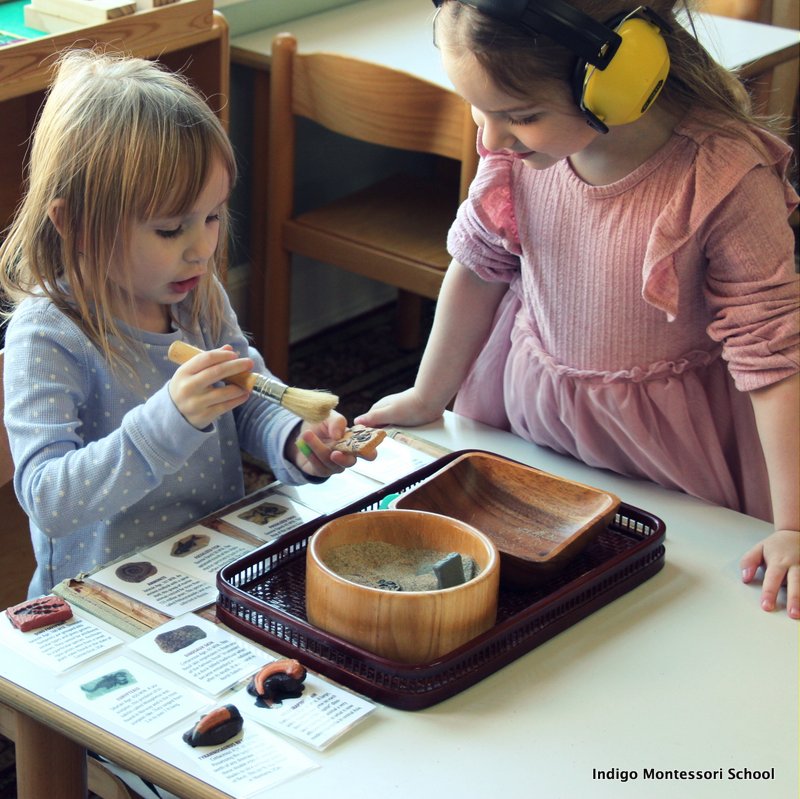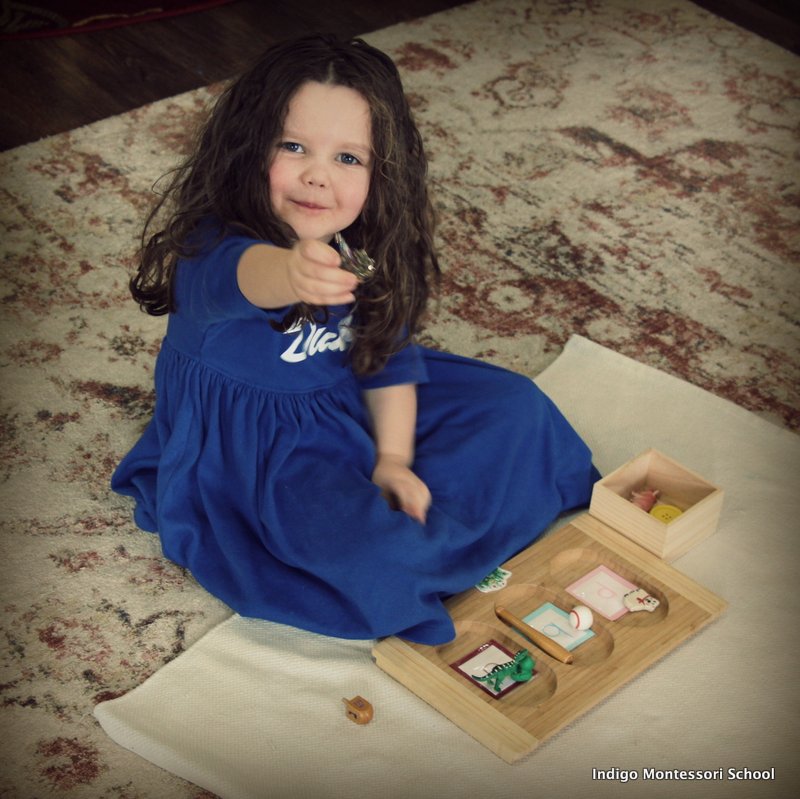Building Foundations: A Journey of Growth and Independence
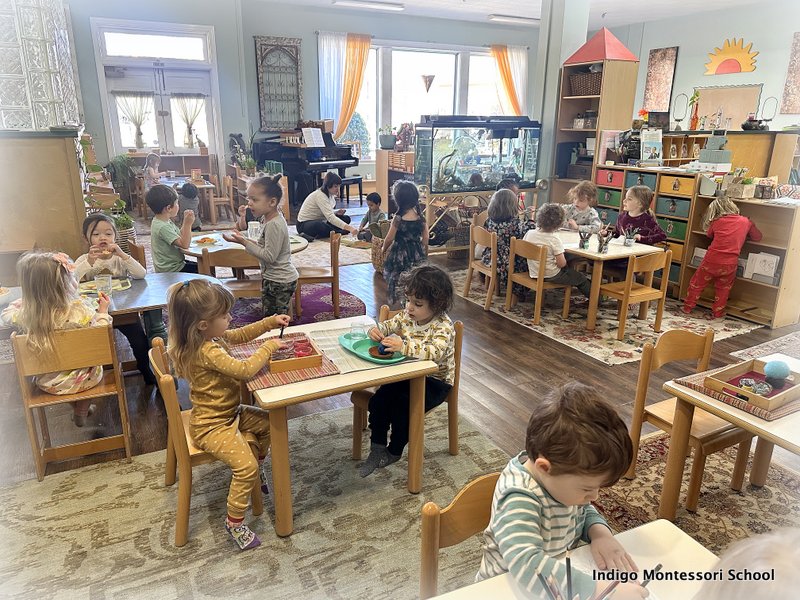
Dear Parents,
As we progress through the school year, our Primary students have been immersed in a wide range of lessons that foster curiosity, independence, and a love for learning. We hope that our lessons and activities list sent out on Fridays, along with any artwork from the week, has given you a sense of our full and enriching weeks. We hope that this also provides an opportunity to ask your children about the works—especially since many children tend to “forget” about their day in the moment when asked (you are not alone!). If you’ve been following the lessons, below you will find more detailed descriptions of the experiences we’ve shared across the different subject areas.
Music Lessons & Activity
Children are discovering how different instruments can play together by following the same musical structure and shared notes, like those in the key of C. They have enjoyed practicing the ‘Kalimba’ (thumb piano) and organizing our ‘Color-Coded Bells’ in the key of C. We have explored octaves and reading music with the treble clef and staff. Along with these concepts, Ms, Caroline has been introducing musical symbols such as crescendo (gradually getting louder), piano (soft), and forte (loud), to help children recognize how volume and expression are represented in music.
Many children are enjoying exploring notes on the piano at this point, with a few rules in place to avoid disturbing others during the work cycle. Students playing the piano often gently press single keys in any order or explore multiple notes at a time by following the chords marked with colored stickers.
We have a very musical group this year, and they love using their voices. Students regularly request songs that we have broken down and explored together, discussing the stories behind the lyrics and finding ways to connect with the music. They have developed a good sense of singing in unison, considering tempo to sing at the same pace to form a chorus. Children are also learning to sing with expression and narrative as they find meaning in the words of each song.
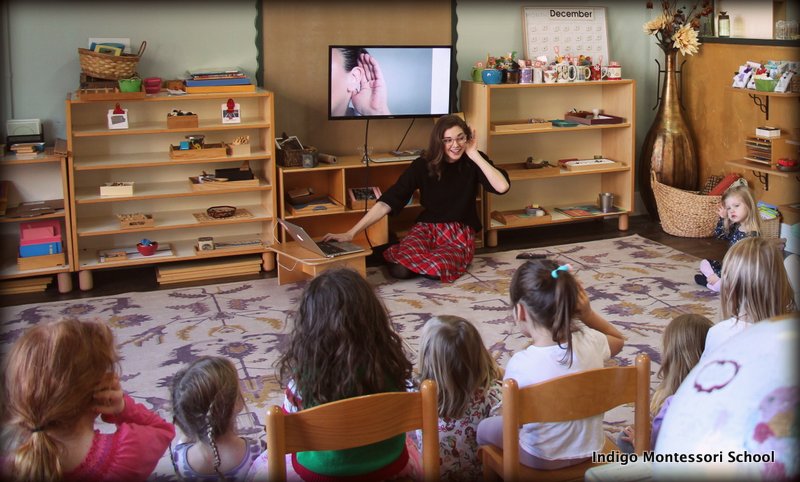
Culture, Science, and Geography: Lessons & Works
These topics tend to overlap more than any other areas. For example, when we discuss culture, geography plays a huge role in understanding where cultures are formed and how they evolve.
The students have recently had lessons on significant cultural events, including “MLK Jr. Day,” “Chinese New Year,” and “St. Valentine’s Day.” We reflect on history through imagery and fun facts about how these stories developed into celebrations, focusing on themes of love, togetherness, equality, and diversity. Our goal is to approach these topics gently, avoiding graphic details that many children are not yet ready to comprehend. By introducing these stories with age-appropriate sensitivity, we help children embrace the key takeaways—lessons that will resurface in later years with more depth.
I can vouch firsthand for this approach. For example, my first grader (an Indigo graduate) recently learned additional details about Martin Luther King Jr., including his assassination—something we do not specifically discuss with the children here. Because she already had a strong sense of the story, understanding that he was treated unfairly, she processed the new information with thoughtfulness, expressing concern, disappointment, and appreciation for his bravery. The truth is not always easy, no matter how much you prepare a child, but if you feel your child is ready for more details on tough topics, we understand that some children may be exposed earlier. We just like everyone to keep in mind that our classroom has a wide range of ages, and some friends may not yet be ready to fully grasp certain complexities, which could lead to misunderstandings, uncertainties, or fears.
In addition to cultural celebrations, we explore cultures through our study of the continents. Children especially enjoy learning about different “fashion statements,” which resonates with them as they discover and embrace their own styles. We love to celebrate originality, creativity, and authenticity. With works around culture, such as image-matching cards, students have been learning about peers from around the world, broadening their understanding of global cultures.
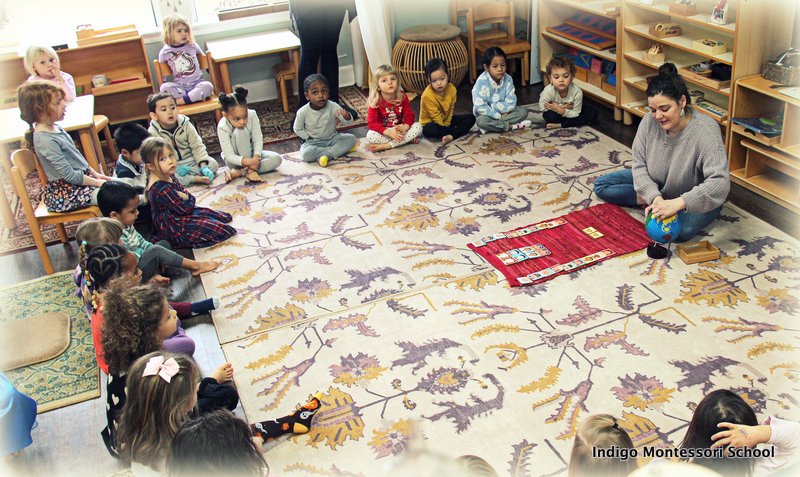
Our scientific and geographical explorations have included a variety of hands-on works and engaging discussions. One favorite is the “sponge experiment,” where students explore absorption by adding water to new, tightly compressed sponges and observing how they expand. In our study of “density,” children have explored various sensorial materials, diving into complex ideas such as how particles can be tightly packed or loosely arranged.
Magnets continue to be a classroom favorite. The concept of “magnetic vs. non-magnetic” is introduced in the Pre-Primary Studio, and as children move into the Primary Studio, we build on this foundation with deeper discussions about the complexities of magnets and how they interact with different materials. This work remains fresh and exciting as teachers regularly rotate the objects for children to test and explore.
Investigating rocks, minerals, and fossils has been another highlight. We have a large collection of rocks and minerals, and we are expanding our fossil collection. Children love organizing these materials by type using matching cards or reference books, diving into discussions about how rocks, minerals, and fossils are formed. We encourage them to think like geologists or paleontologists, as they engage with materials from the natural world.
Our lessons on the “five senses” and human “organs” have introduced new works where children categorize objects used for each sense and match them with mini model organs. These materials lead to curious discussions about the complexities of the human body. It’s always fun to listen to what fun facts the children already know about how their own bodies work.
Geographical studies this semester have focused on “famous global structures” and landmarks in the continents of Asia, Australia, North America, South America, and Europe. Each continent work includes objects or figurines, along with real-life photo cards representing landmarks, foods, and cultural activities. These materials evolve into storytelling opportunities where children use figurines to act as “travelers” and “tourists” exploring various destinations. Moving their figurines across the photo cards laid out before them, students “visit” landmarks, “sample” cultural foods, and explore traditions.
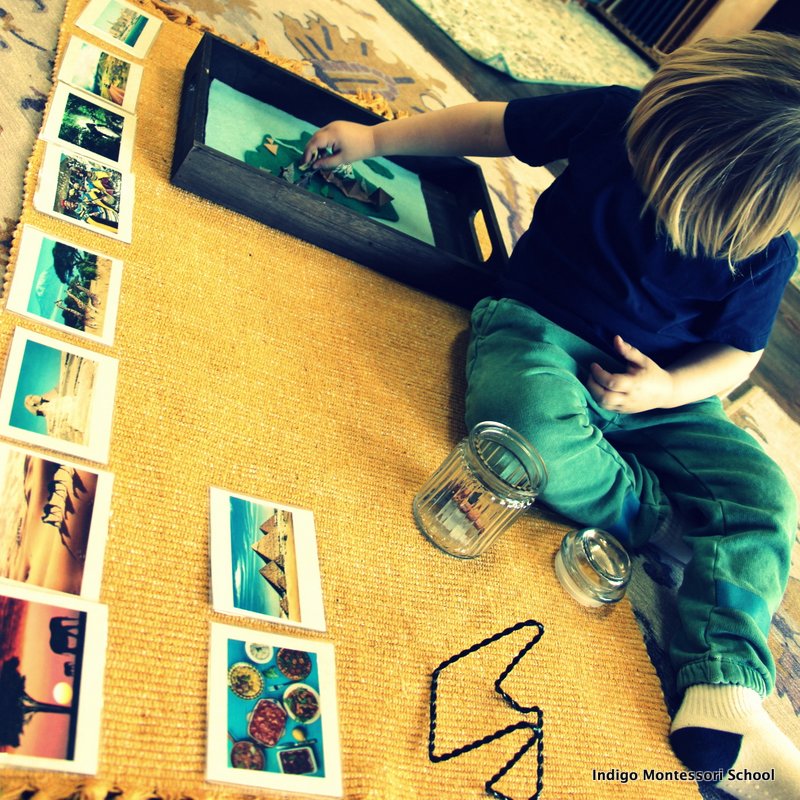
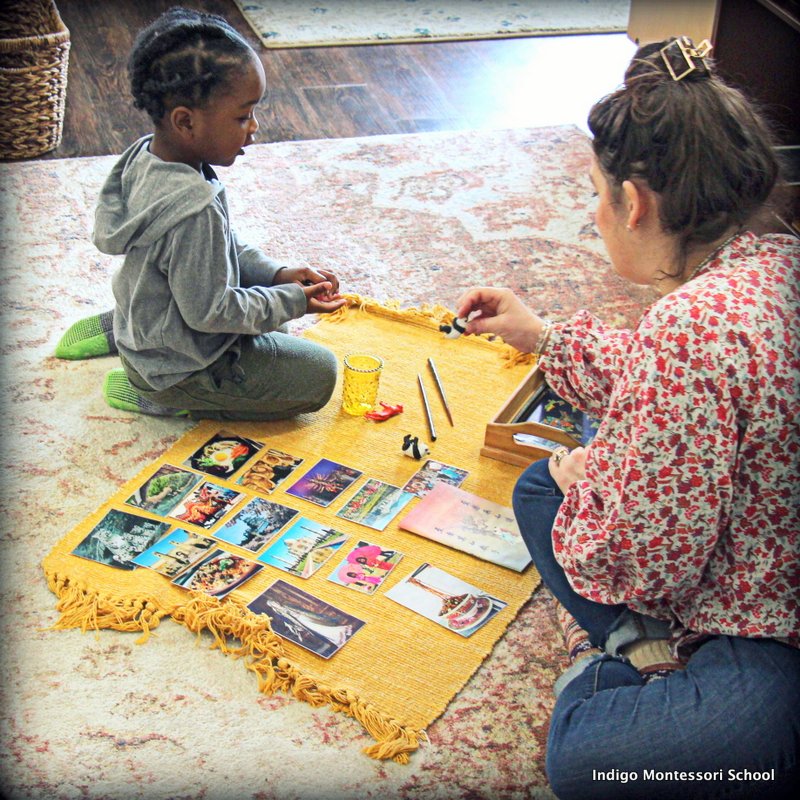
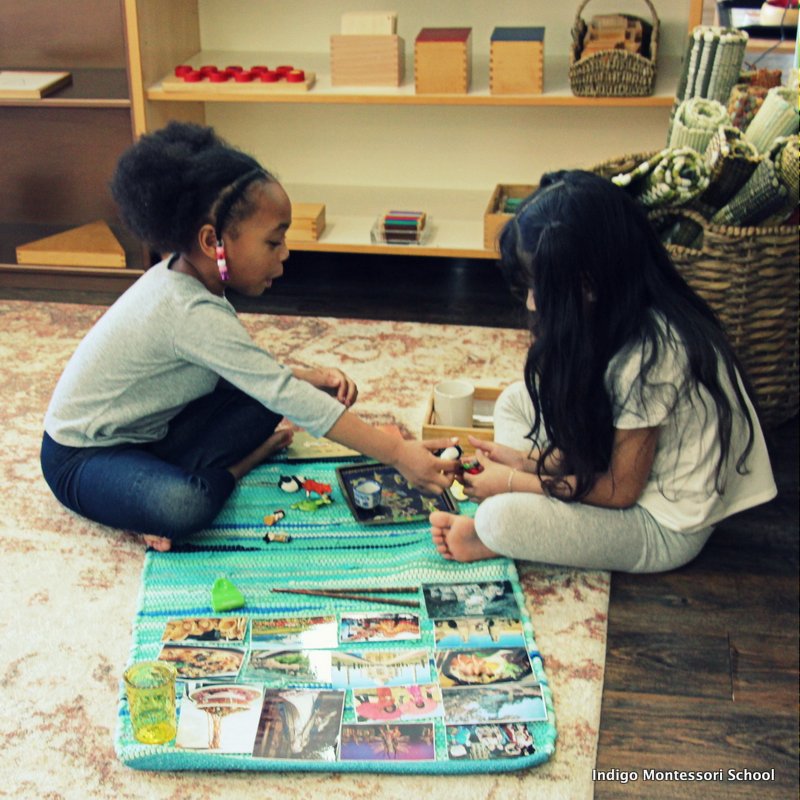
In our landform studies, we have introduced pairs of concepts like ‘straits and isthmuses,’ ‘peninsulas and gulfs,’ and ‘islands and lakes.’ Presenting landforms in inverse pairs helps children easily distinguish the unique layouts of land and water. To extend this understanding, they explore mini land and water models and use natural materials like rocks and shells to sort objects representing animals or materials found on land or in water.
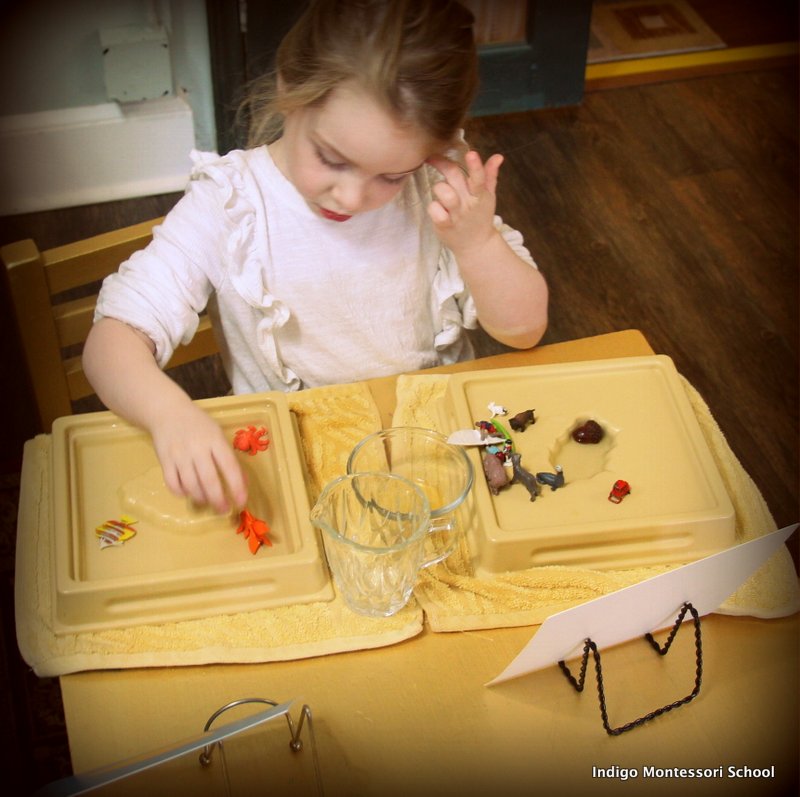

Seasonal studies have brought us to ‘winter works’ and a focus on ‘Antarctica.’ Children have explored glaciers, underwater life, and animal behaviors, especially the family dynamics of penguins. This naturally leads into our zoology lessons, where connections between geography and animal habitats become clear.
Zoology Lessons & Activity
Building on these discoveries, students have shown great interest in the animals of Antarctica and the underwater world. They have especially enjoyed learning about the penguin life cycle and exploring other fascinating creatures. Lessons on the life cycle of birds and further studies of mammals and fish have been equally popular, deepening their understanding of how different animals grow, live, and adapt to their environments. Our storytelling works often involve building model habitats for particular animals.


Most recently, we introduced reptiles, learning and sharing fun facts from photo reference books. We are especially focusing on the unique journey of the sea turtle. Children love our sea turtle work, where they recreate the journey described in one of our favorite sea turtle storybooks—an engaging and memorable way to connect literature with science.
We also introduced dinosaurs, sparking discussions about prehistoric times and engaging children with “animal matching” activities that support classification and comparison. Building on their curiosity, we explored fossils using models that allow children to match prehistoric animals and dinosaur teeth while learning about dietary classifications. With the class’s current interest and growing knowledge, students naturally shared many fun facts during discussions, leading to conversations about herbivores, carnivores, and omnivores.
Rest assured, we are mindful in our approach, avoiding overly graphic books and doing our best to make light of these ferocious animals—gently touching on terms like predators and prey while especially focusing on fun facts like their size, diets, and how paleontologists uncover their history. When it comes to animal models in the classroom, we tend to highlight herbivorous dinosaurs, such as the Triceratops, Stegosaurus, and Brachiosaurus, to promote peaceful storytelling.
We remind the children that while some of them might be allowed to play more wildly with dinosaurs at home, our classroom is a space for calm and constructive behavior—because as fun as stomping and roaring can be, acting like wild animals in the classroom isn’t the best way to practice being safe with one another and caring for our materials!
Practical Life Area & Lessons
Students have refined their fine motor skills through activities like “wooden tongs transfer,” color mixing with droppers, handling modeling clay, and “pin-poking hearts.” They have recently enjoyed practicing with our trainer chopsticks, and some are even trying to use traditional chopsticks without the trainer.
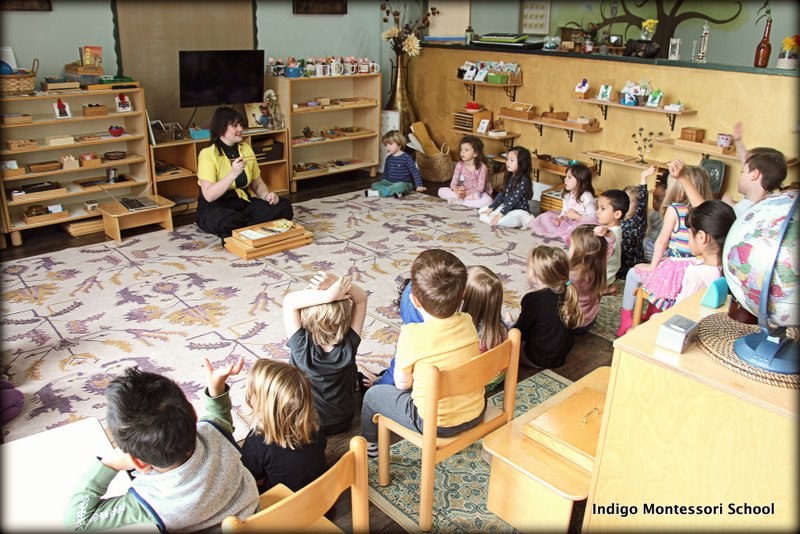

We have also introduced sewing after having PowerPoint presentations introducing careers in fashion design, accessories, and home décor. These lessons naturally led to hands-on experiences with hand sewing, such as practicing the “running stitch” and using sewing pins to decorate pin cushions.
Teaching hand sewing is a classic old-school Montessori practical life skill—one that isn’t as emphasized in many modern classrooms but remains incredibly valuable in our method to this day. The same holds true for our pre-requisite works such as handling sewing pins to decorate pin cushions, pressing tacks into a tack board, and “pin poking” along the lines of tiny printed shapes. Why is this significant? These tools are refining the pincer grip. Think about how you would naturally pick up a tack or sewing needle—you wouldn’t grip it with your fist! You’d instinctively use your fingertips, taking a similar hold as we do with a pencil. This positioning, which can be challenging for young children who are just beginning to write, becomes more natural as they work with these small, pointed materials, strengthening their hand-eye coordination in the process.
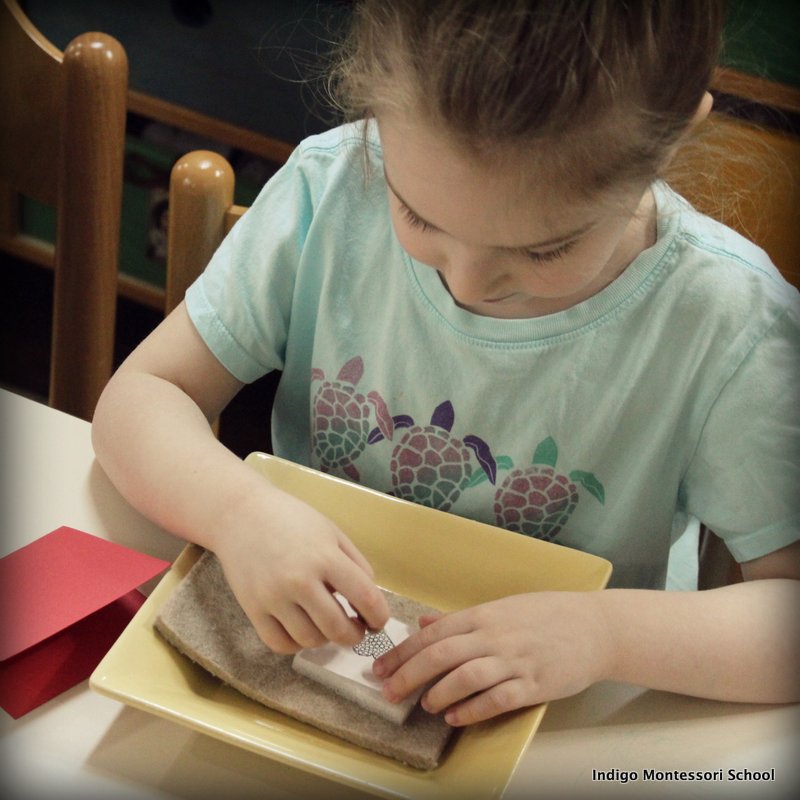
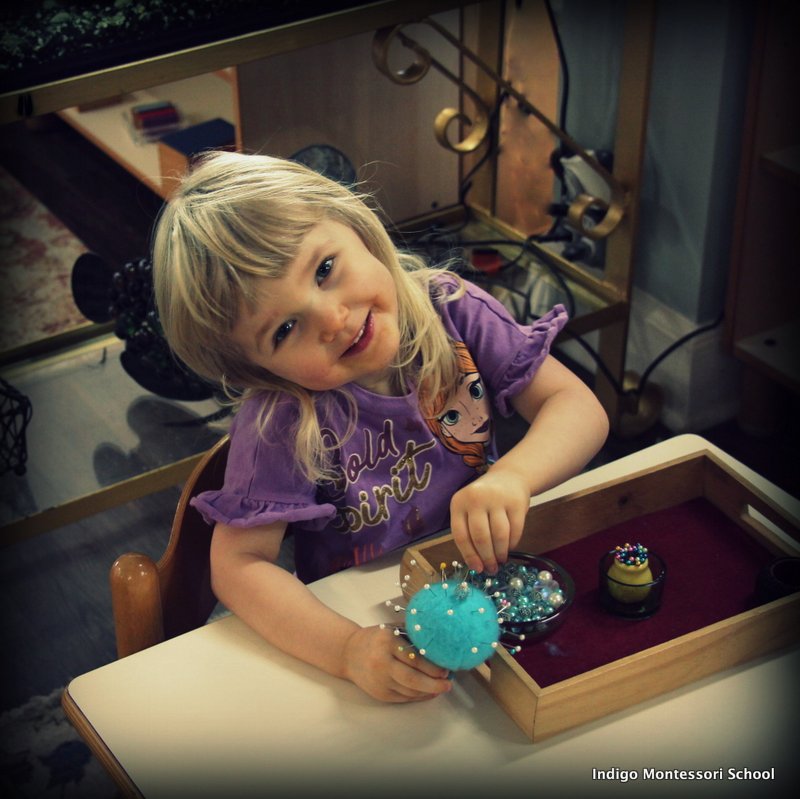

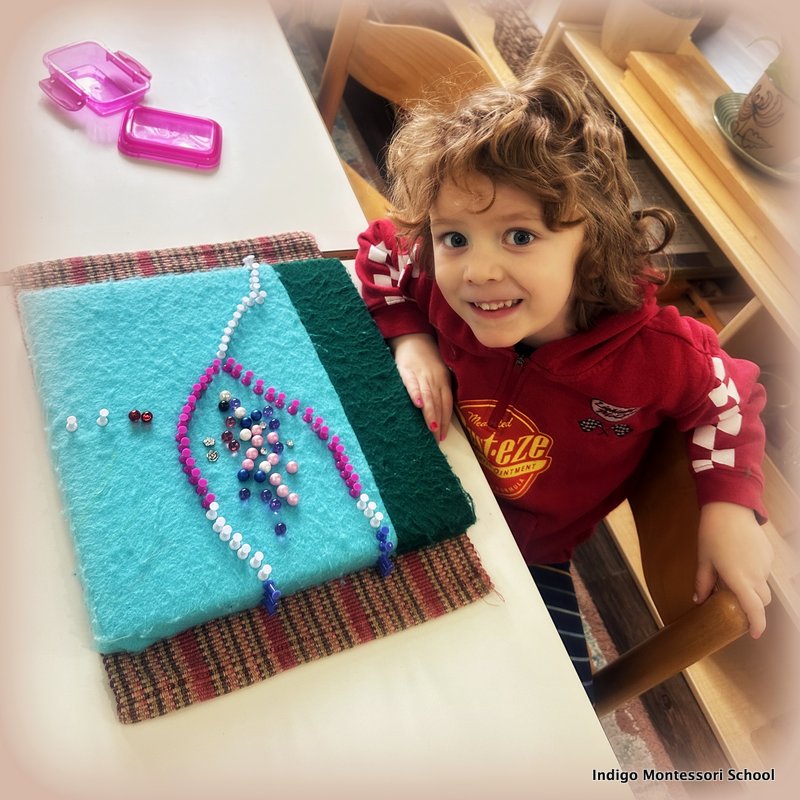

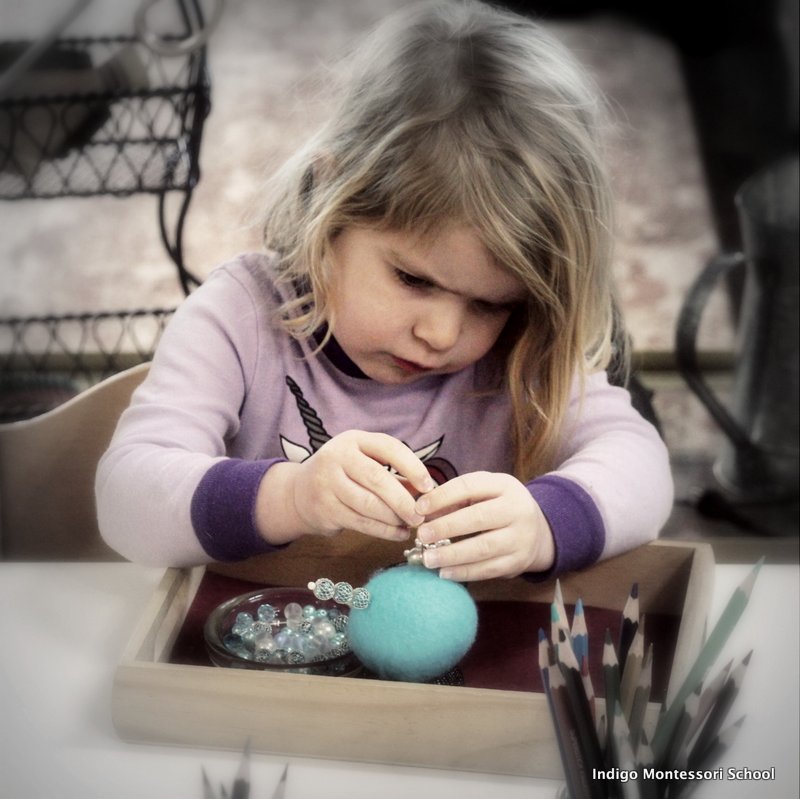



We take pride in how Montessori children typically develop strong pencil control, especially our oldest students who have been with us for some time. Through hands-on activities and fine motor work, they often show a natural ease in coloring, drawing, tracing, and writing—skills that may take longer to develop in some traditional school settings. Again, I can personally vouch for this. During my earlier teaching years in traditional schools, I worked with many second and third graders who were still struggling with their pencil grip—despite trying various pencil-holding tools to help them. If only I had known then how activities like sewing, pin poking, and tack work could naturally build that essential muscle coordination!



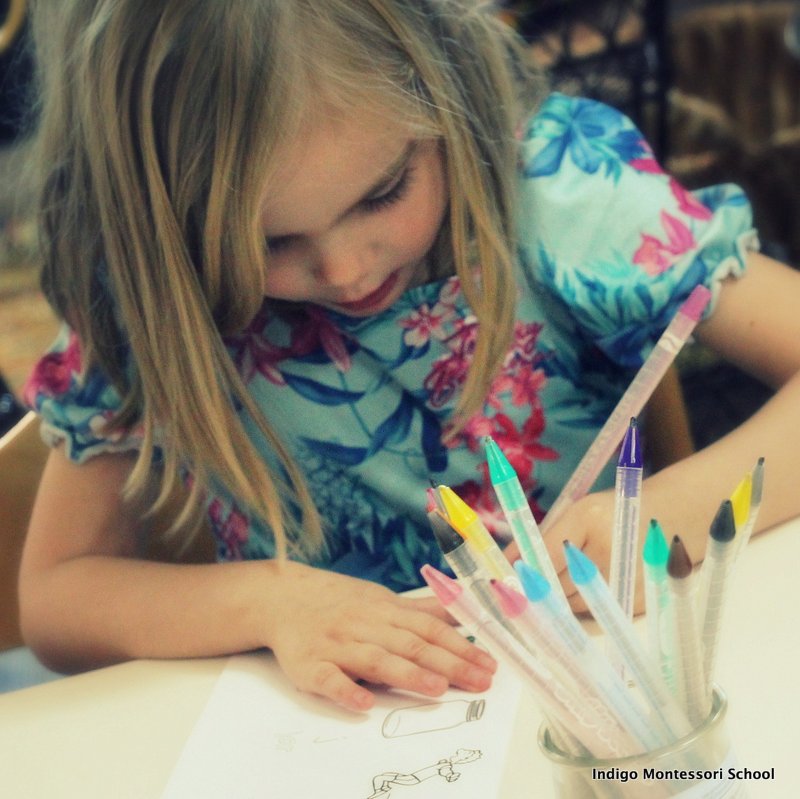
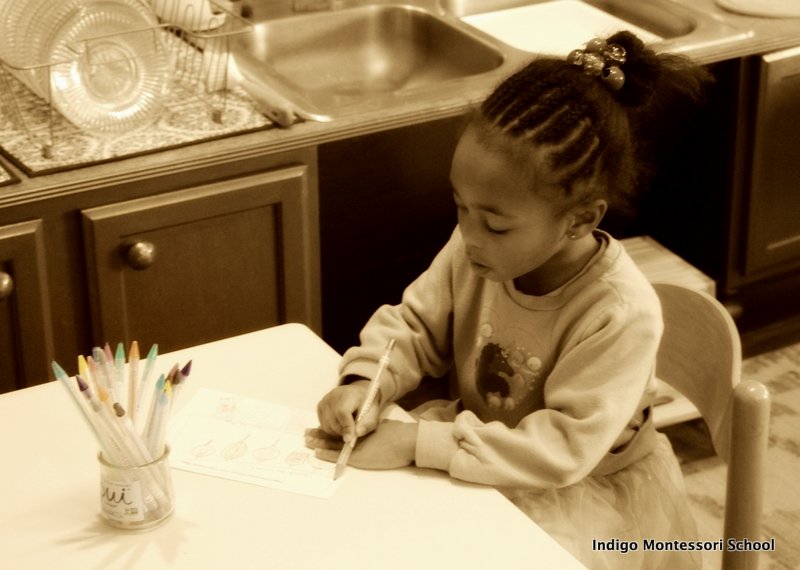

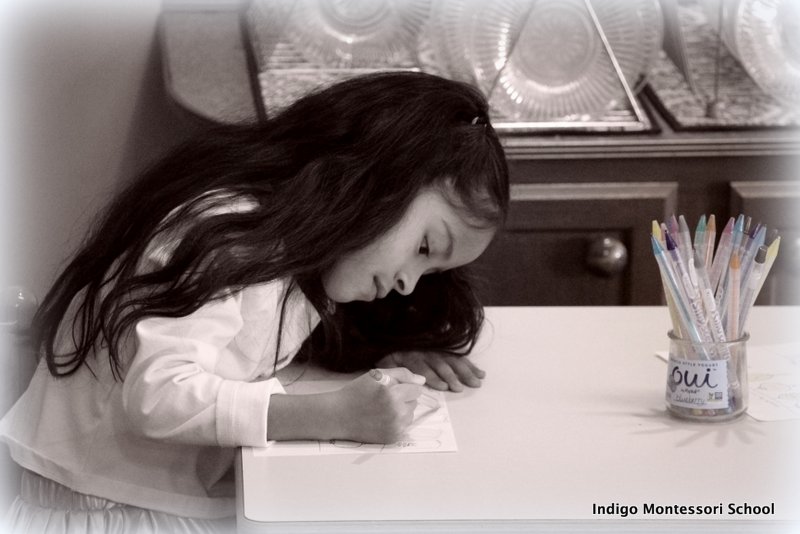
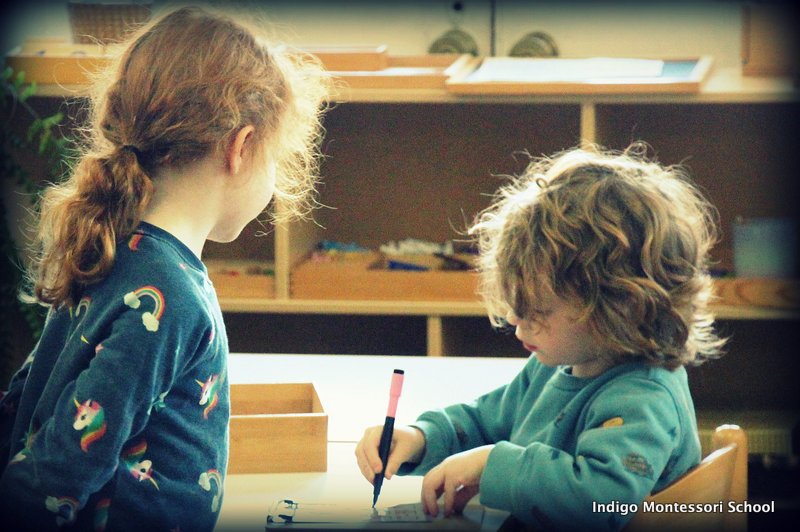
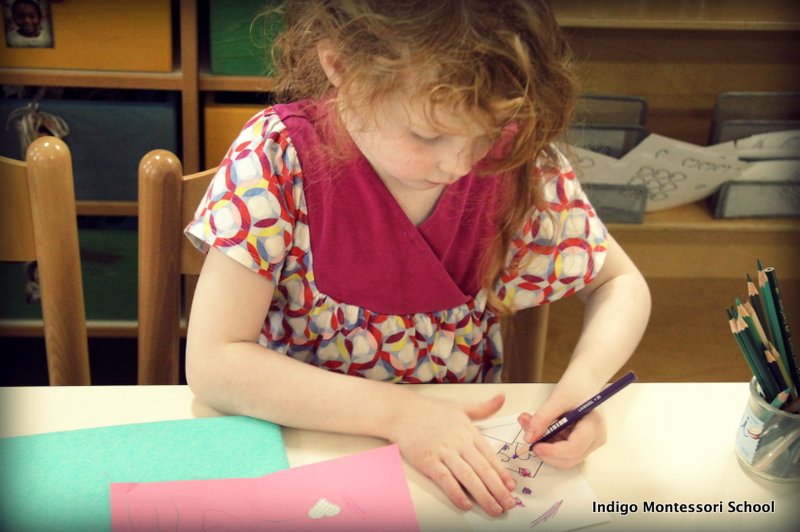
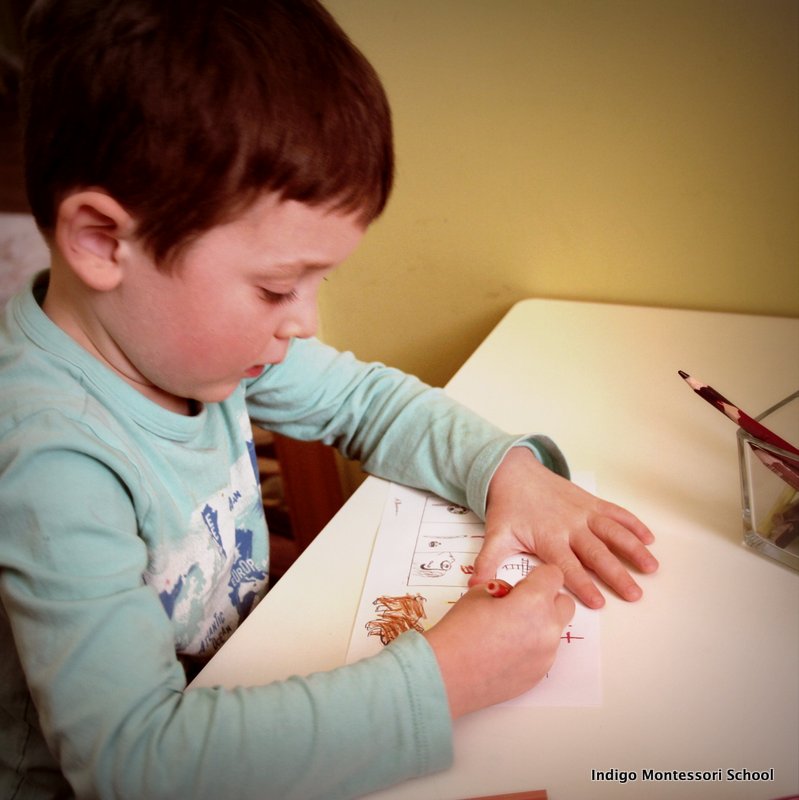

We started “flower cutting and arranging in vases,” a classic Montessori activity that children love. They take great pride in decorating the classroom with their freshly cut flowers, making the environment feel warm and inviting.
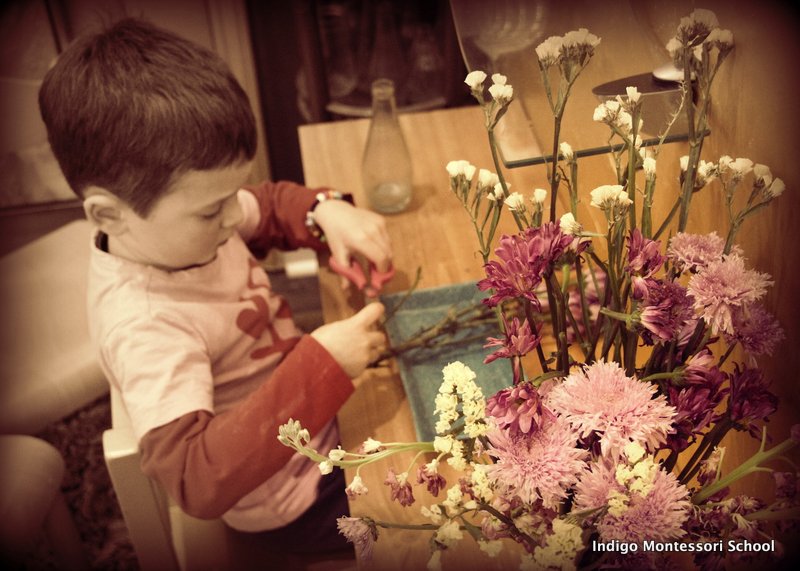

Along with this, our students have explored various scissor activities, like cutting “fringes” to add creative accents to their artwork. Our students have enjoyed participating in communal art themes and working on customized activity pages. Many of our materials encourage creativity, allowing children to develop their own designs while drawing inspiration from our lessons, suggestions, and discussions. Once a child has learned how to use a material safely, we often offer strategic or creative extensions. During demonstrations at circle time, a teacher might introduce a pattern or begin assembling a work, then pause halfway to invite children to imagine possible directions or to encourage them to complete the task themselves during the work cycle. These moments open the door to imagination, encouraging children to find their own paths or solutions. Our students have been building an understanding that these materials are not toys and require careful handling. By using the tools safely, with care and mindfulness, they can fully enjoy the process of creative thinking.
Discussion Topics: Grace, Courtesy & Safety
Our social development lessons have recently emphasized “food safety,” “ground rules,” “table manners,” and “lunchtime safety,” fostering independence and respectful interactions. As many of you know, we do not ban allergens in our classroom, as we believe it’s important for children to prepare for the real world and learn how to navigate their own dietary needs or restrictions. We regularly discuss the importance of not sharing food and keeping our friends safe, especially since several students have allergies to foods such as eggs, dairy, peanuts, and tree nuts. We are very proud of how our students show understanding and awareness of these topics. They are also practicing good hygiene habits, like washing their hands and faces.
These discussions naturally lead to topics around manners, including how to eat neatly. While we address serious subjects, we also use lighthearted approaches to help children better understand. For example, during a recent discussion circle, we asked, “If your friend had food on their face while talking to you, would you hear the words they are saying?” The class responded in unison, “No!” We then encouraged them to imagine, “If you had food on your face, do you think your friends would hear what you are saying?” followed with, “Would you want someone to tell you that you had food on your face?” and “What are kind ways to say so without hurting someone’s feelings?” We received some very thoughtful and sweet responses!
We always return to the principles of grace and courtesy to tie these discussions together, offering suggestions or inviting children to share examples of acts of kindness and gentle ways to communicate. Looking back, many of us can only imagine how helpful these early conversations would have been in our own childhoods.
Social & Emotional Development
Along the same lines as grace and courtesy, we encourage children to “use their words” to expand their vocabulary, helping them express themselves more clearly, be better understood, and develop greater empathy for one another. We go beyond basic feeling words, introducing more precise language to describe emotions—such as shifting from happy to excited or from mad to frustrated—and encouraging children to explain why they feel a certain way.
We also discuss solutions to everyday conflicts and engage in activities that help children practice patience, taking turns, and resolving problems with their peers. Some favorite works include “feelings imagery” and a new “Peace and Harmony” dice game, where children explore meditation, deep breathing, yoga moves, and other self-regulation strategies in a fun and engaging way.
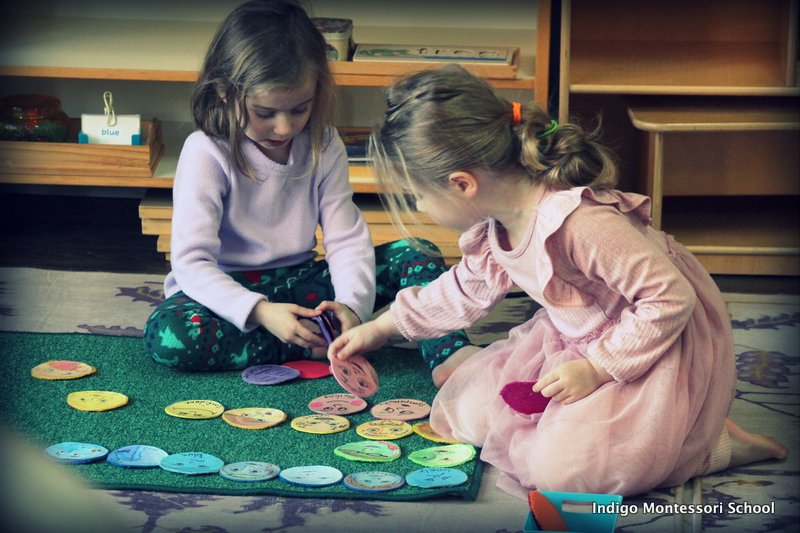
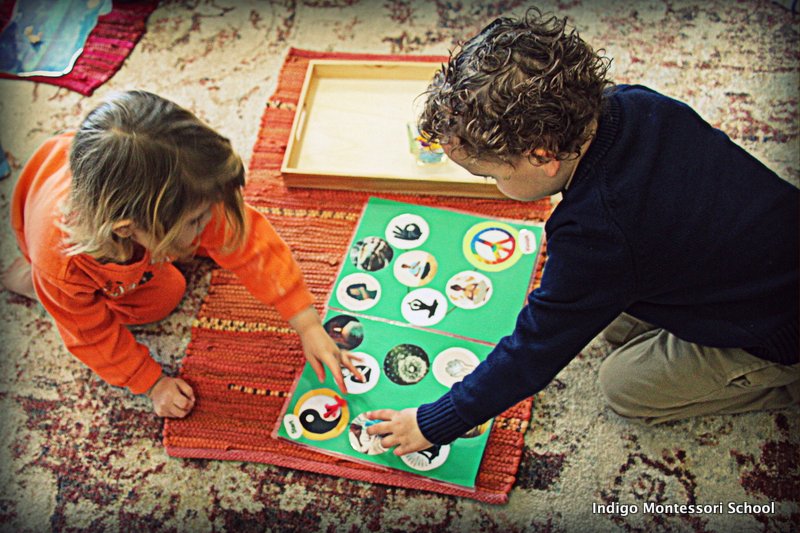
Art, Everywhere!
As if we haven’t mentioned it enough, we tend to place a strong emphasis on art and creativity—perhaps more than your average Montessori school—especially considering many of our team members have a background in the arts. We are all happy to share our knowledge through lessons, collaborative projects, and more. Of course, art is naturally integrated into many Montessori materials. For example, “Metal Insets” are a classic tool where children practice using the pincer grip for writing while tracing fun shapes to create interesting designs and patterns.
Some of our recent art-heavy lessons have included:
– A discussion on “Pointillism” and landscape art, focusing on Seurat’s paintings and studying various landscapes.
– Creating “winter landscapes” for the current season and making “heart décor” for Valentine’s Day, using materials like buttons, beads, intricate objects, and glass gems.

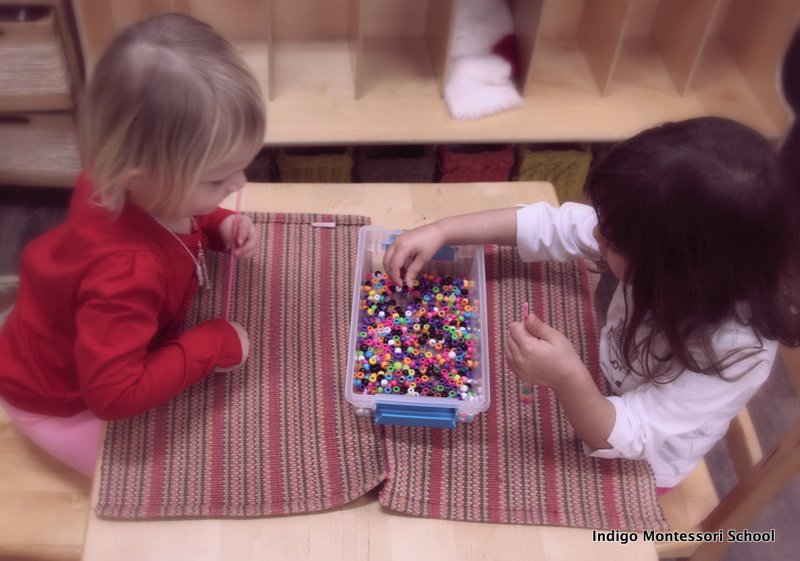

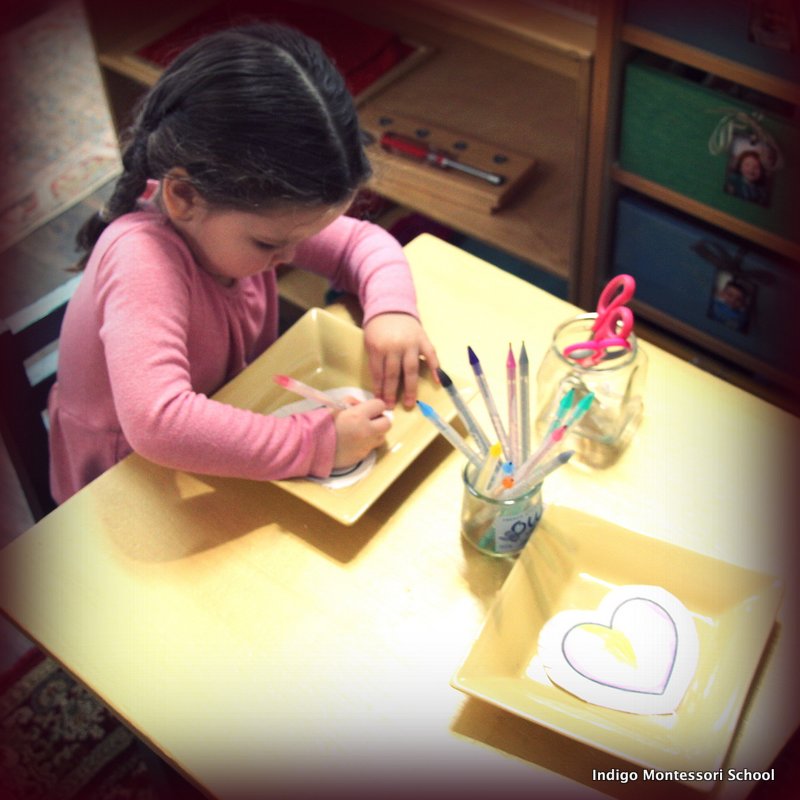
– Collaborative projects at “communal art tables,” where children explored themes inspired by “glaciers” and celebrated traditions like the “Chinese New Year” by decorating lanterns, and most recently, creating Valentine’s-themed symbols of love.
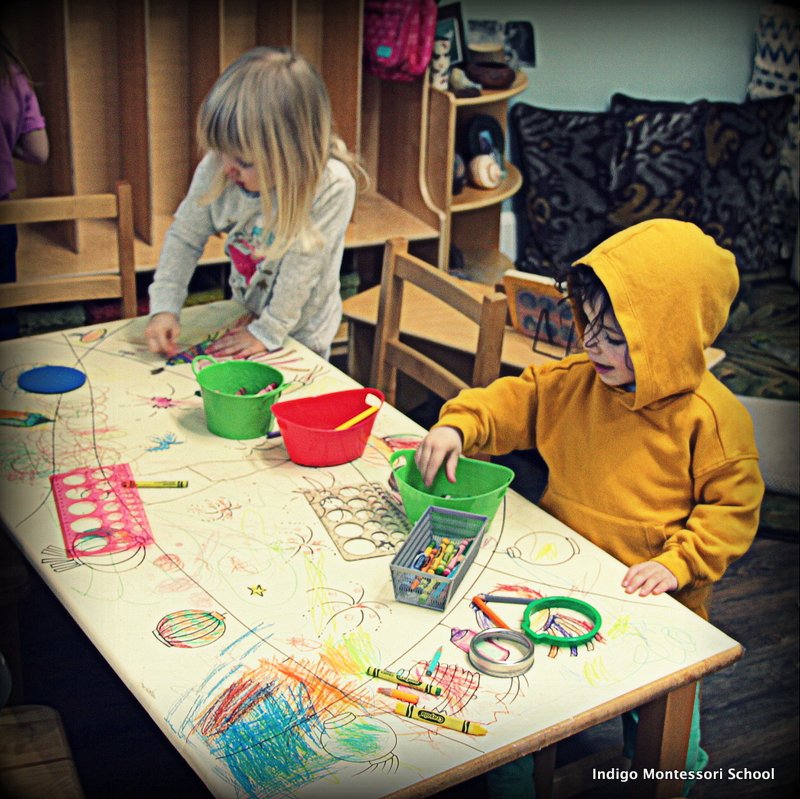
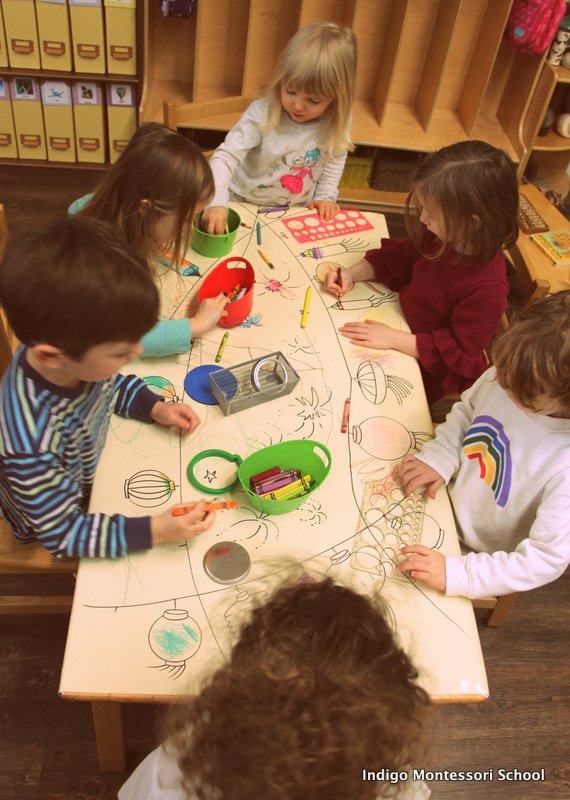


In addition to these lessons, Ms. Caroline and Ms. Angelique often create works of their own, often explaining along the lines, “we made this for you to enjoy, learn, and explore– so please help us to take good care of it.” Caroline enjoys painting imaginative landscapes and crafting backdrops for storytelling boards to learn beginning sounds, while Angelique designs many of the activity pages focused on letter-sound recognition and Montessori-inspired artwork that encourages children to “add to the picture” and “make it their own.” Ms. Cici, Ms. Angelique, and Ms. Caroline also enjoy taking turns to draw up the next communal art table design for children to collaborate on.
We Montessorians are collectors of unusual objects, regularly assembling new and engaging exploratory works for the classroom. Many of our works and lessons involve a great deal of preparation—researching, printing imagery, laminating, building layouts with felt and foam, gathering figurines, inventing new games, and so on. Making materials for the students to learn from is part of what makes Montessori so special– a big part of what drives us every day!
Math Lessons, Works, and Activity
We have explored math in various ways, using both classic Montessori materials that help children recognize physical quantities alongside their corresponding number symbols, as well as Montessori-inspired works created by our teachers with grids, felt shapes, and miscellaneous objects for counting. By this point in the year, children are organizing numbers, matching quantities, and discovering patterns in math.

Some of the ways they have engaged with these concepts include:
– Working with “fractions” materials, such as pie puzzles, and participating in “dice games” that promote teamwork and taking turns.
– Creating patterns with the Montessori color-coded “number beads,” also known as the “bead stair.”
– Developing an understanding of numbers “7-10” in both their digit form and physical quantities.
– For our older students—or children who show readiness—we have introduced addition and subtraction for single digits using both written equations and physical objects to figure out the answers. We’ve also explored “teens addition” and “skip counting” to further challenge and engage them.
All children are exposed to these concepts at varying levels. Even when a child isn’t directly working on equations, they often engage with foundational math skills indirectly—such as counting, adding, or organizing objects while working with hands-on materials or sorting activities.
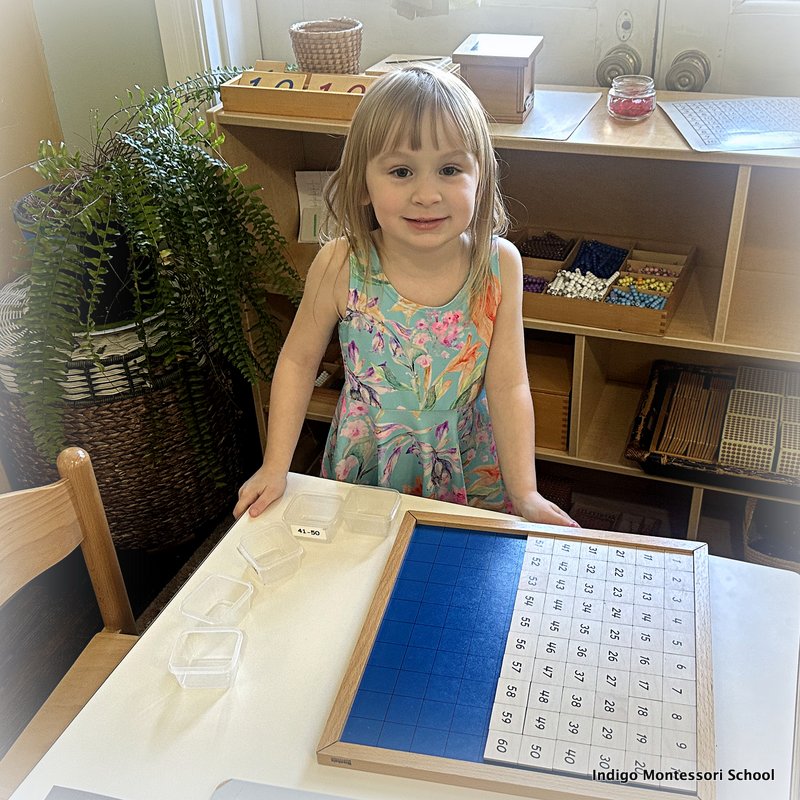
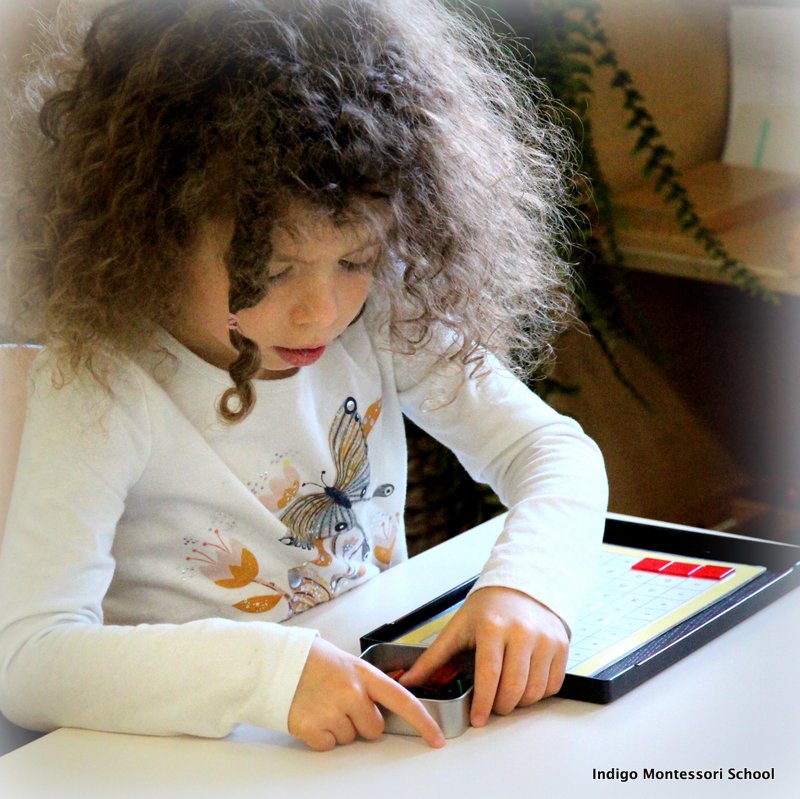



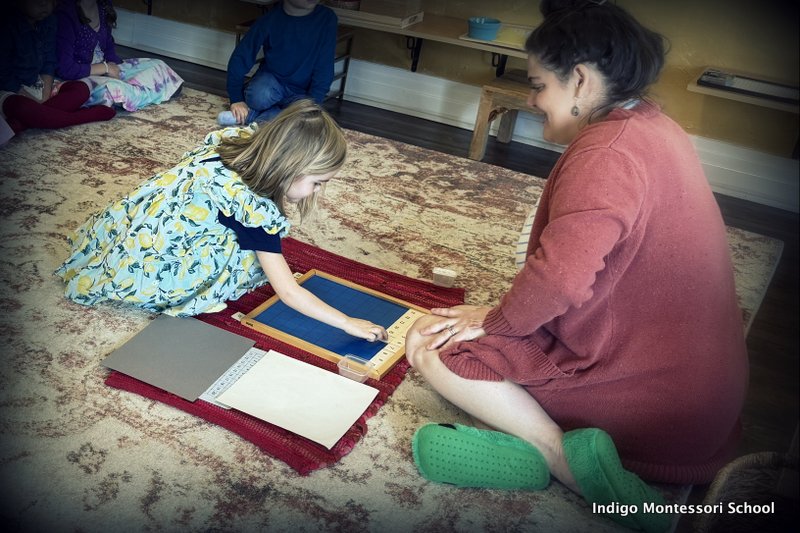
Language & Beyond!
Language is integrated in all areas of the classroom! We are big into vocabulary, visual matching cards, objects and labeling them, sentence building, sequencing. storytelling, beginning sounds, and more. By this time of the year, our first year students are beginning to memorize some beginning sounds while 2nd or 3rd year students know a good number to potentially start word building. While word building concepts are demonstrated to the entire classroom, some of our oldest students are working on word building through participation during small group or one-to-one lessons. Everyone learns at a natural pace, and the early exposure and positive experiences truly help to prepare them for the next school, no matter what point they are at – they will all leave understanding the concept that letters make sounds, forming words and ways to communicate.
So far, since January, we have had lessons on the following:
– Sensory-based activities such as making “letters in the sand.”
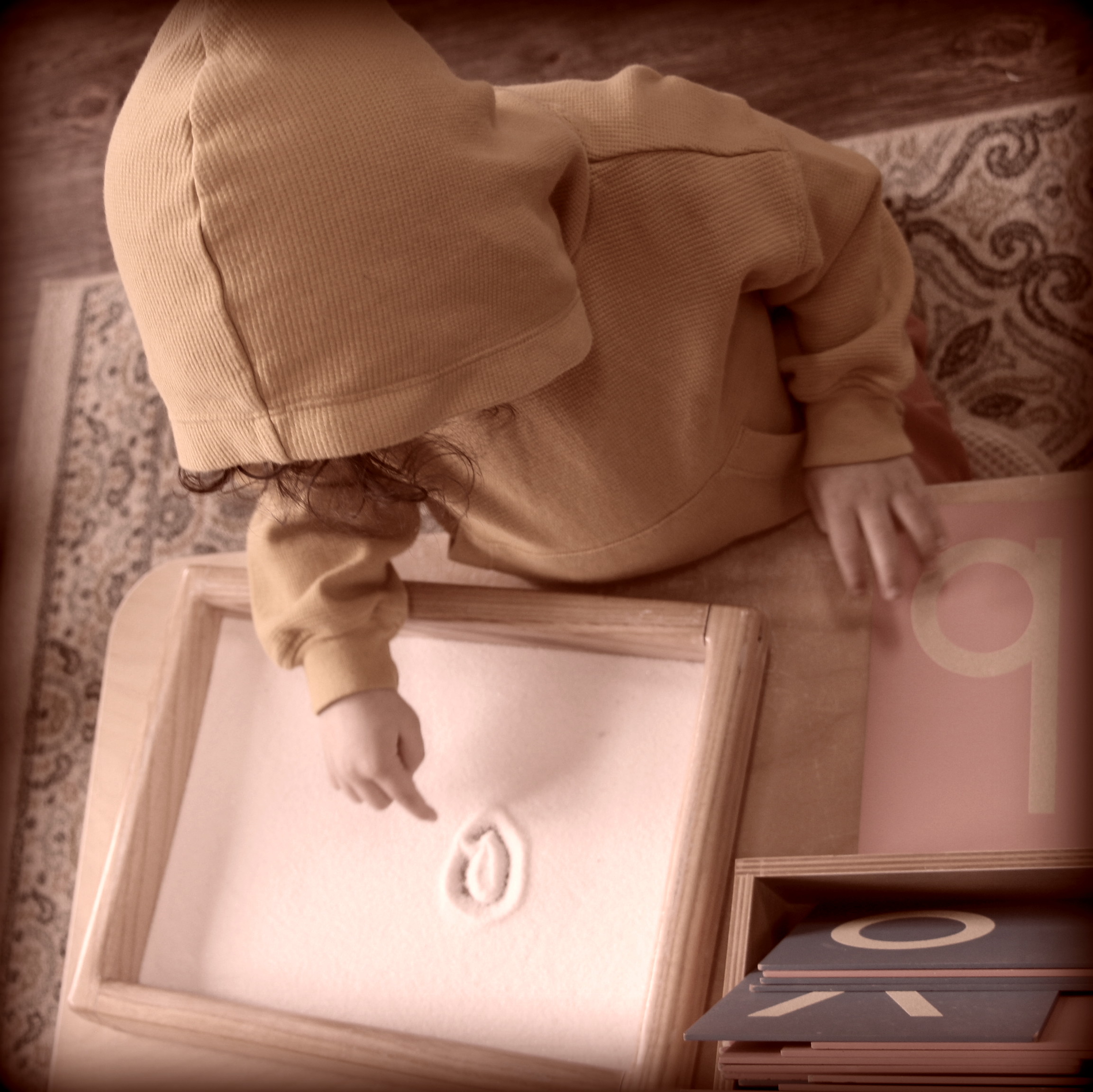

– Sorting similar-looking letters such as “b/p/d” and recent letters individually introduced, including: h / w / e / n. Side note for anyone new to Montessori, we focus on lowercase letters and the common letter sound first.
– Using “a construction scene and label cards” to expand vocabulary as children build their own scenes, imagining themselves as construction workers or designers.
– Exploring “Metal Inset Extensions” for drawing has been an exciting part of our art lessons. Using the triangle inset, students have created images out of shapes, such as, “triangle to tree” and designs resembling a “train track” or “sidewalk,” as we explore depth and perspective in artwork. These classic Montessori materials naturally encourage children to use the pincer grip, holding the pencil and the inset pegs in a way that strengthens fine motor control essential for writing.
Some of our young artists also experiment with the ‘painter’s grip,’ a hand position inspired by how painters hold a brush at an easel—arm extended, hand above the brush, and fingers underneath to guide broad, sweeping strokes. In the classroom, children sometimes use this grip with colored pencils (while seated, with their arm bent and working at a table), which is particularly useful for gently shading large areas using the side of the pencil tip with back-and-forth movements. While some children naturally alternate between the pincer grip and the painter’s grip, this provides more flexibility to find different techniques and styles. We avoid stepping in and over-correcting if a child is still trying to figure out a good grip– we want to prevent frustration and discouragement, trusting that child will naturally find the grip that provides them with the best control.
Throughout the classroom, children regularly practice these grips—whether tracing shapes, coloring, or handling small objects in the classroom. So, whether your child has discovered the pincer grip or is still exploring their options when holding a pencil, they are developing these skills in other ways and will naturally figure out the best hold at their own pace.
Sensorial Refinement
Sensorial work in a Montessori environment is exactly what it sounds like: exploring and refining the senses—especially touch, sight, hearing, and smell. Classic Montessori materials are designed to isolate and heighten one sense at a time. For example, children might wear a blindfold to better notice texture differences, subtle sound variations, or weight distinctions. Other works require the use of multiple senses simultaneously. Additionally, these works teach children a sense of order through organizing, grading, or sequencing materials based on their characteristics such as size, sound, texture, or color.
Here are some materials we’ve explored since the beginning of January:
– A “red rod review” to reinforce the concept of length.
– Investigating how shapes form 3D objects using “transparent geometric solids” on a light board, which also introduces the concept of color mixing.

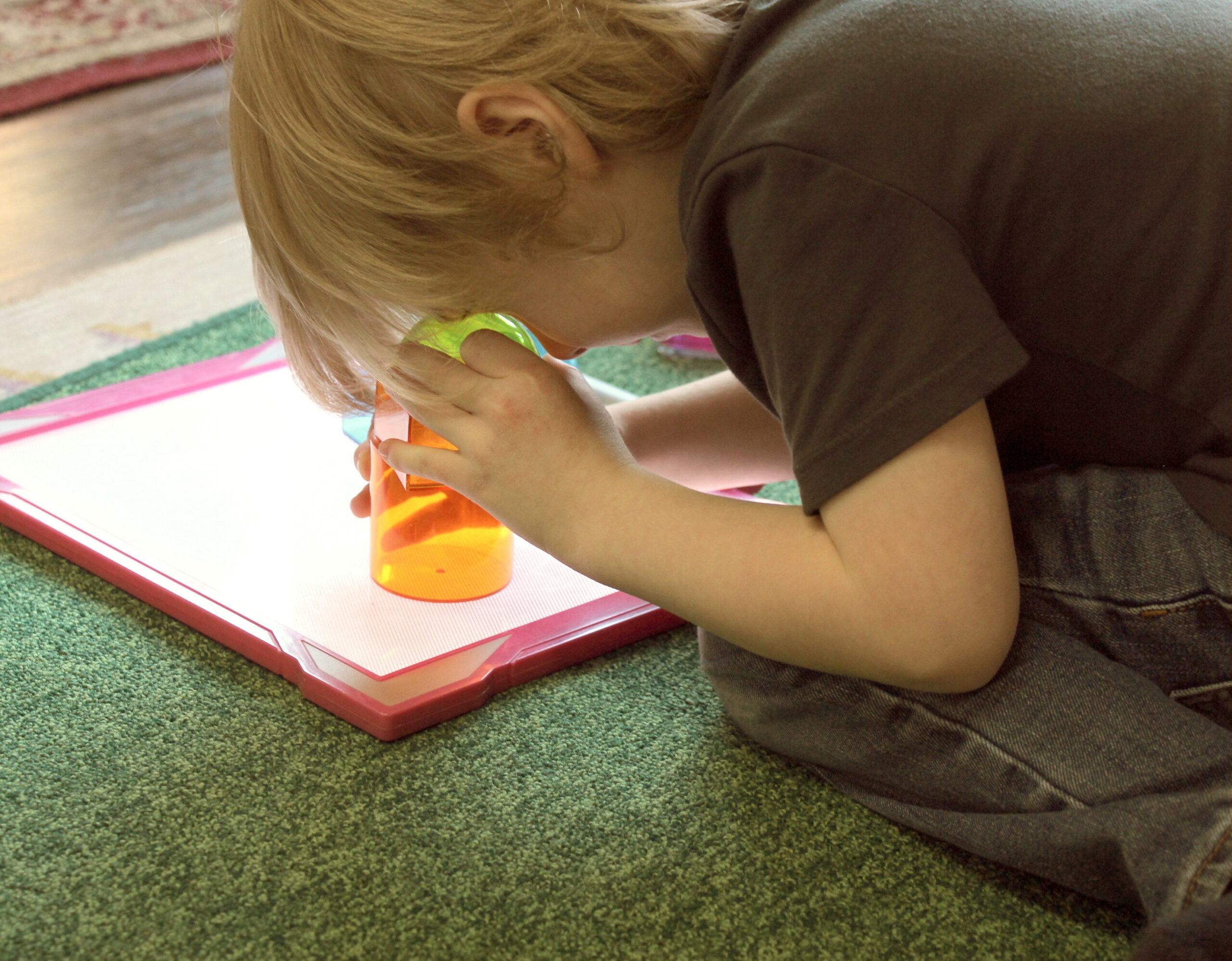
– Discussing “warm and cool colors” and introducing “secondary color tablets,” where children organize colors from dark to light, or from the richest hue to the most diluted (achieved by adding white paint to each color tablet for subtle pigment variations). Children use their sense of sight, even squinting, to better distinguish these subtle differences in tones and shades.
– Engaging with “baric tablets” to explore weight differences, often presented when discussing density. The baric tablets come in three sets of smoothly sanded wooden panels. Children observe the varying wood grains from different trees, feel the weight differences, and notice the distinct sounds when tapping them. For an added challenge, they may wear a blindfold and balance the panels on their fingertips to compare subtle weight variations.
– Children enjoy organizing our sandpaper boards in varying grades, for students to arrange in order from the roughest to the finest or vice versa. Blindfolds encouraged!
-The sound cylinders come in pairs with slight differences in sound—each filled with materials like rice, seeds, sand, or dried beans. Children also enjoy using a blindfold with this work, as it allows them to focus their listening skills more deeply while finding the matching pairs by tuning into the subtle auditory changes.
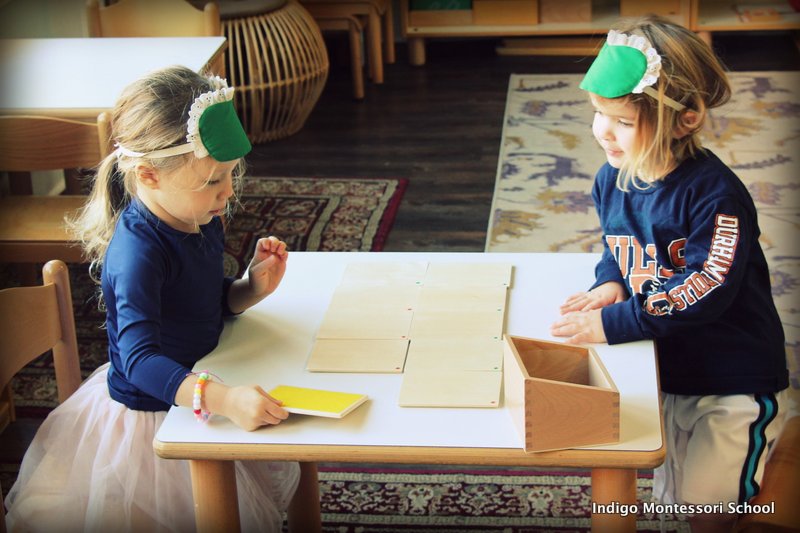

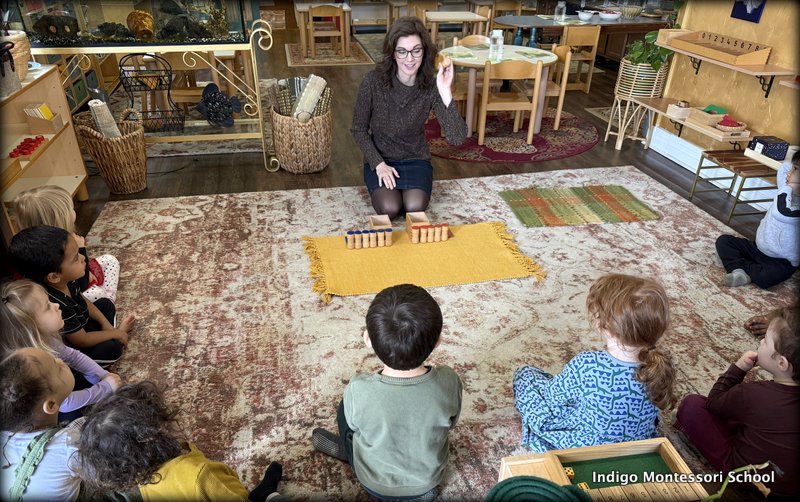
– Students continue to refine their grading skills with our various geometric solids, building superlative and comparative vocabulary to describe the materials while they are organizing and constructing.
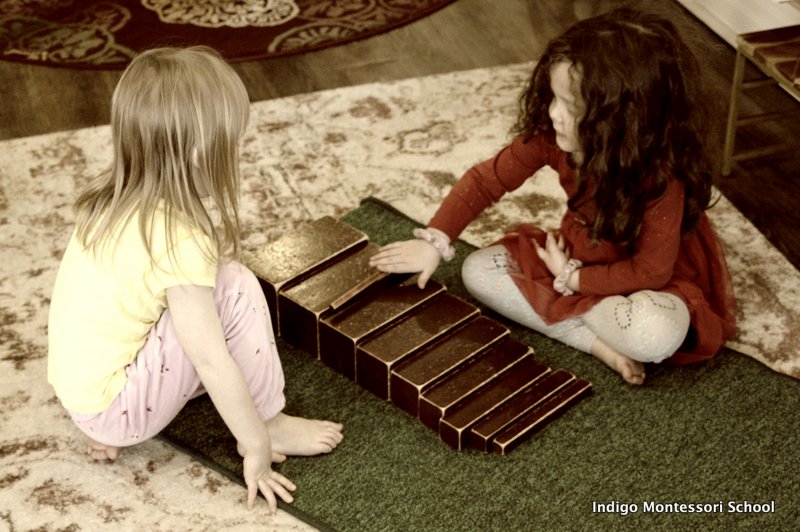
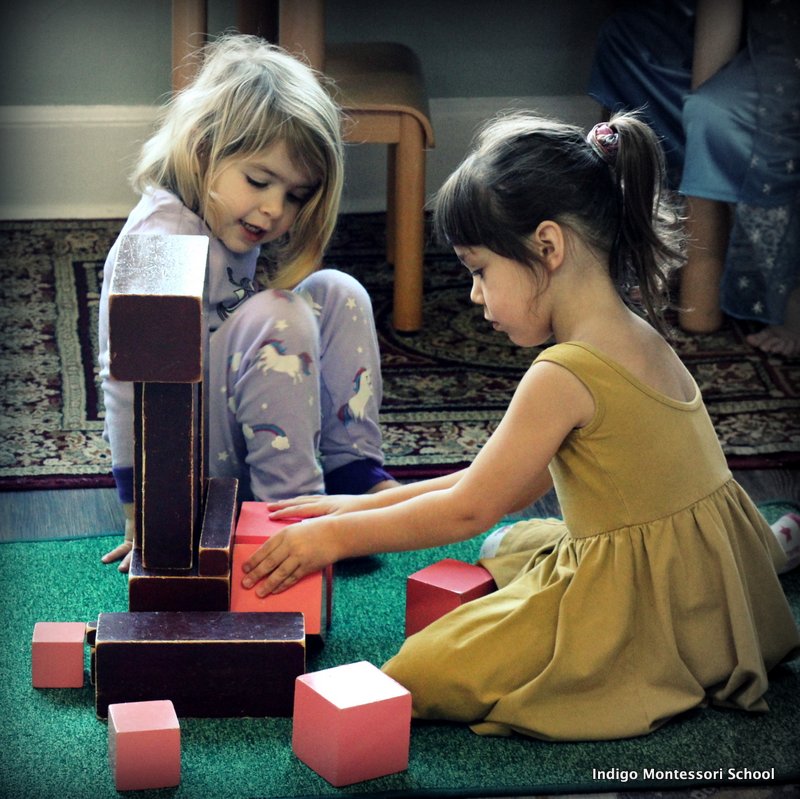

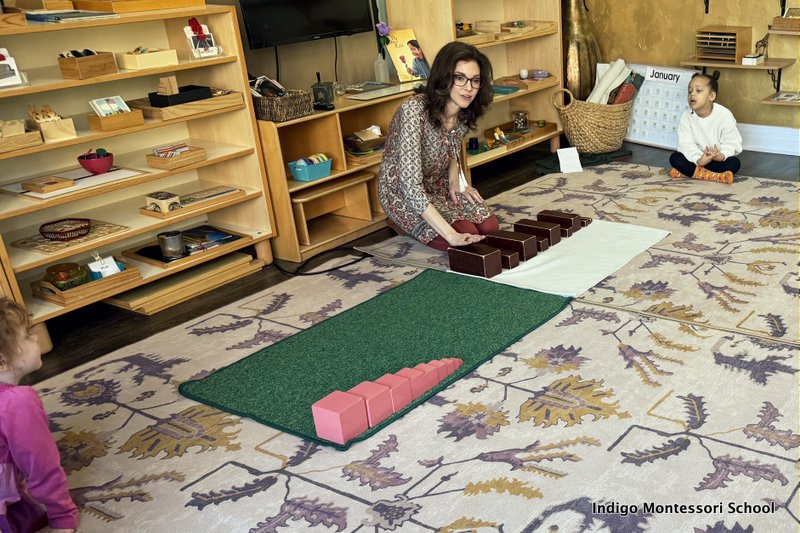
Small Group Lessons
You might notice on occasion that “Small Group” lessons are listed on our Friday lists. Small group lessons are typically organized for children who share similar pre-requisites, interests, or developmental needs. While groups are often divided by age (older or younger), we also “follow the child,” placing them where they will benefit most.
If your child did not participate in a particular lesson, it doesn’t necessarily indicate they are behind or ahead. We consider various factors when grouping children, such as whether a child is deeply focused on a subject, curious to explore something new, ready for a challenge or review, interested in taking on a leadership role within the group, and so on.
You will hear more about small group lessons and individualized activities when we meet again for conferences, which are just around the corner! We are looking forward to meeting with you to talk more about your child’s progress. We hope you are already noticing new skills, thoughtful comments, and fun facts they are sharing with you at home.
Thank you for deepening your understanding of the Montessori Method and for being a part of our journey! We hope you enjoy a closer look into our community in the Primary Studio through more photos below.


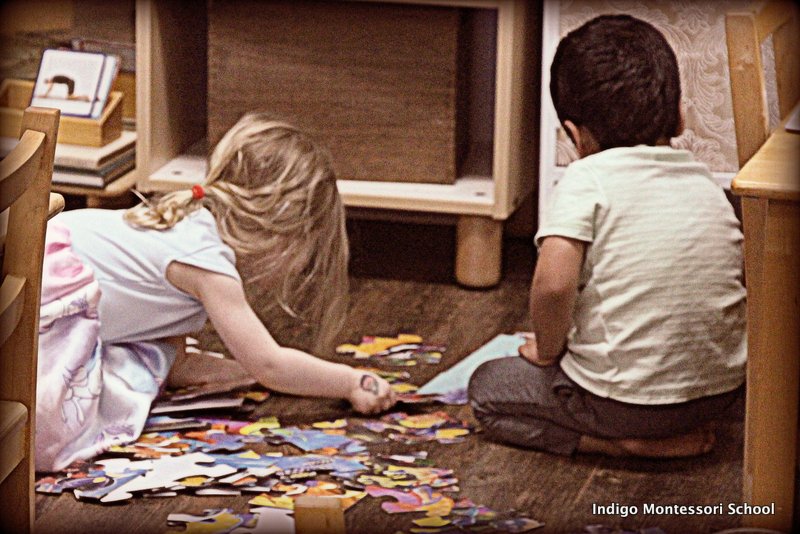
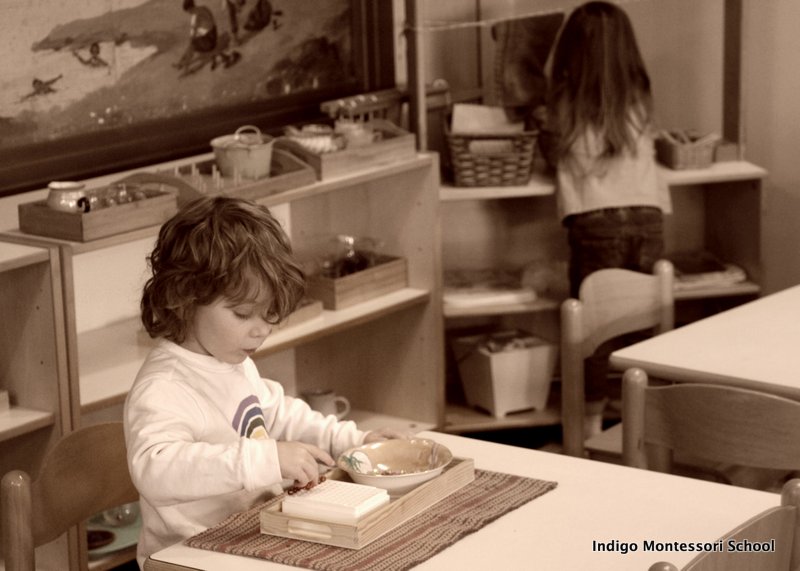

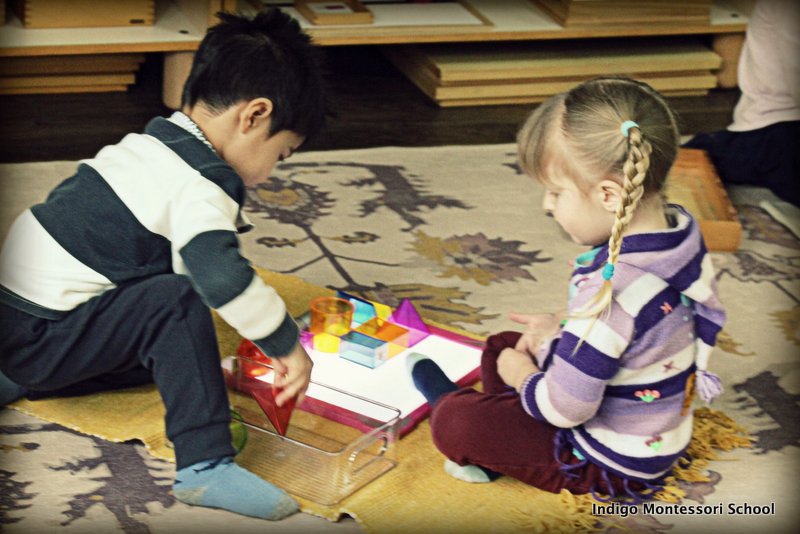
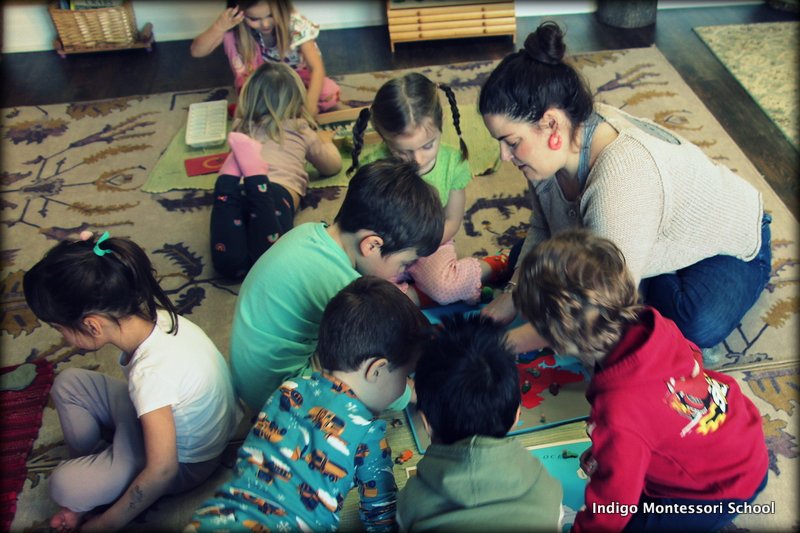

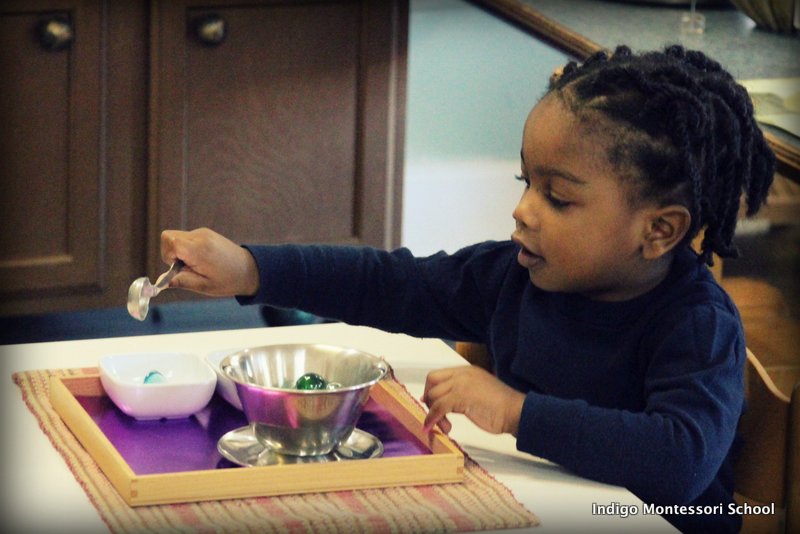
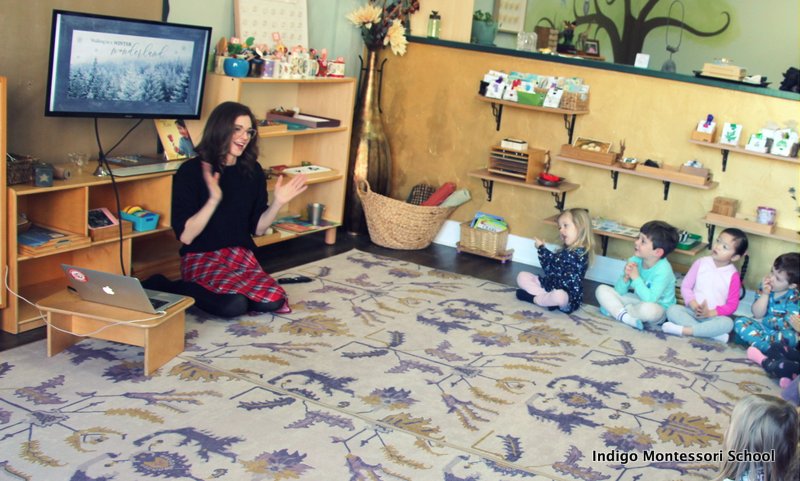
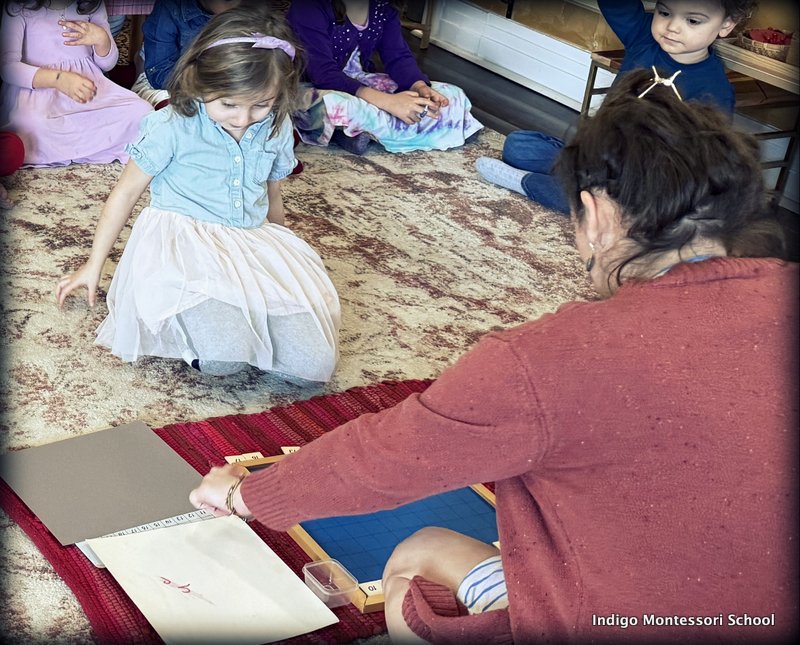
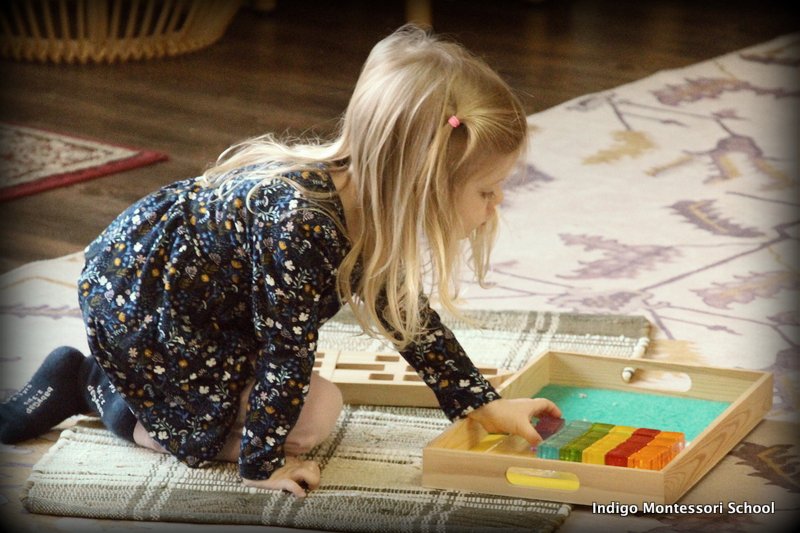

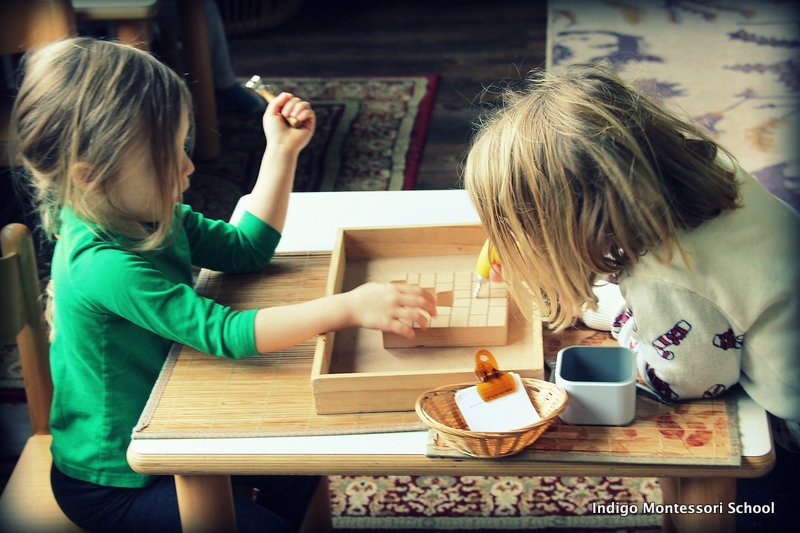

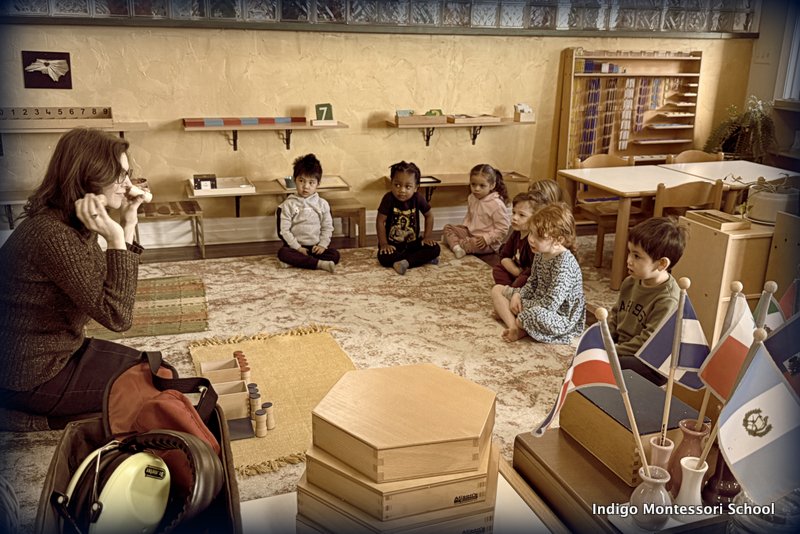


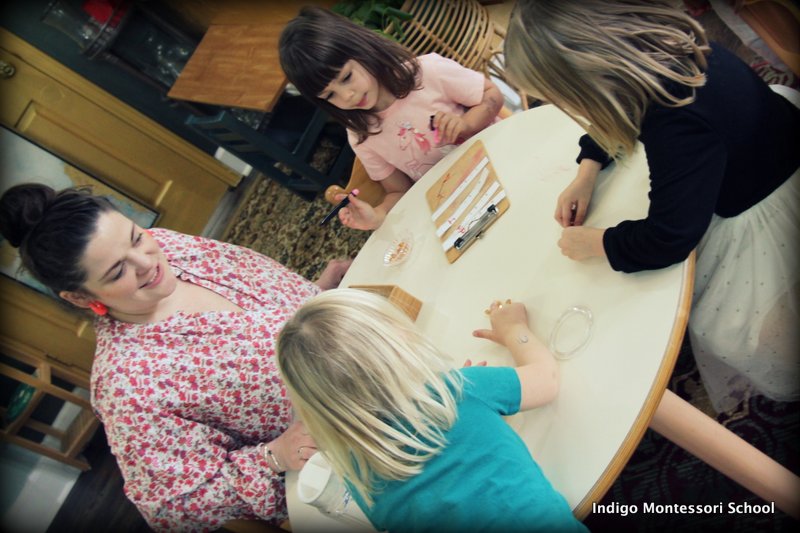

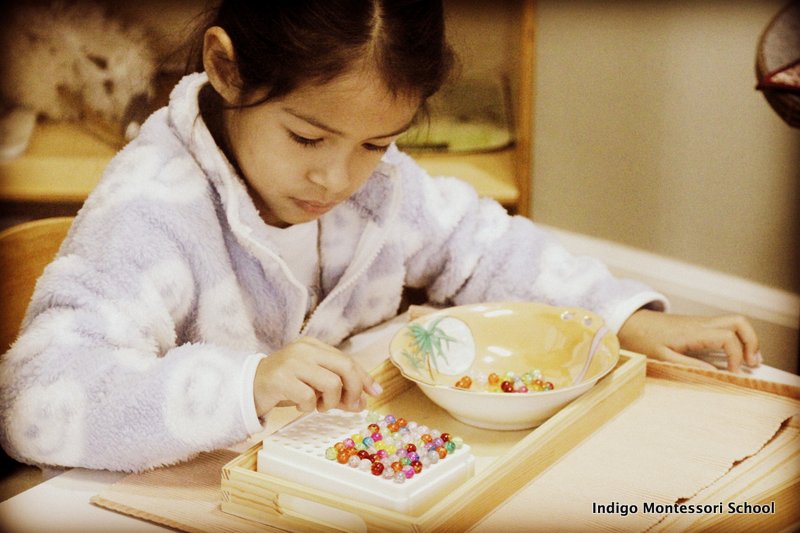




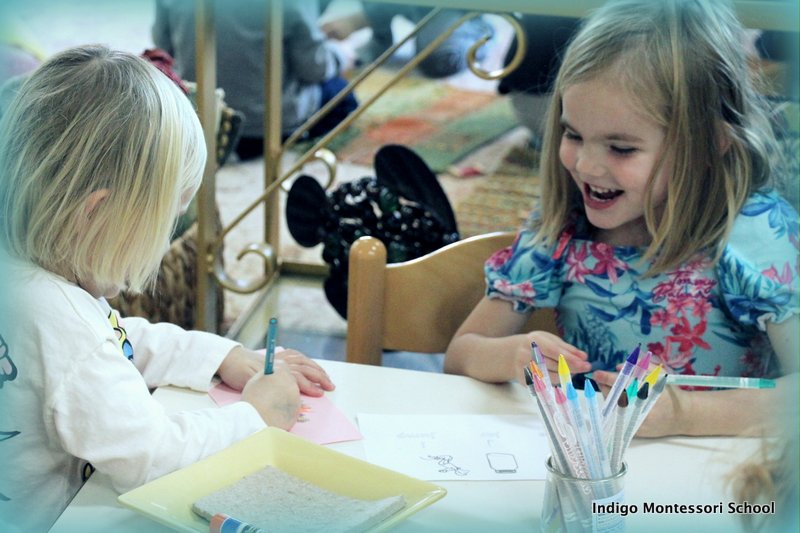
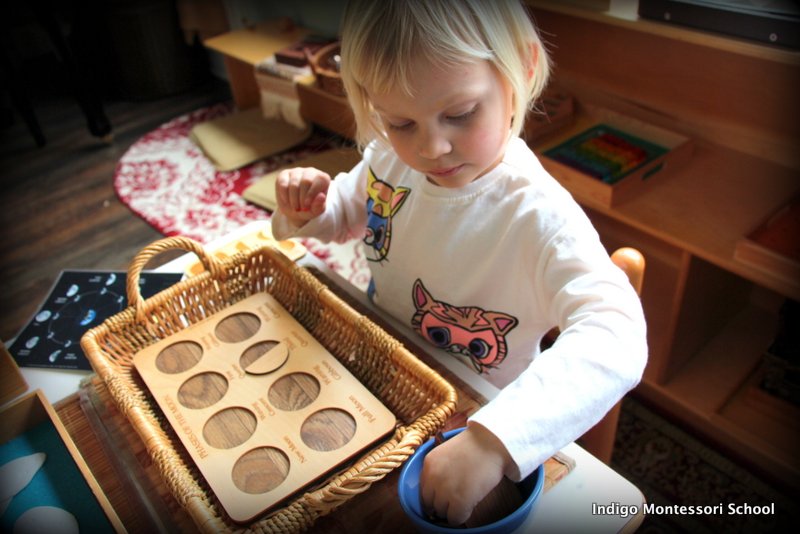
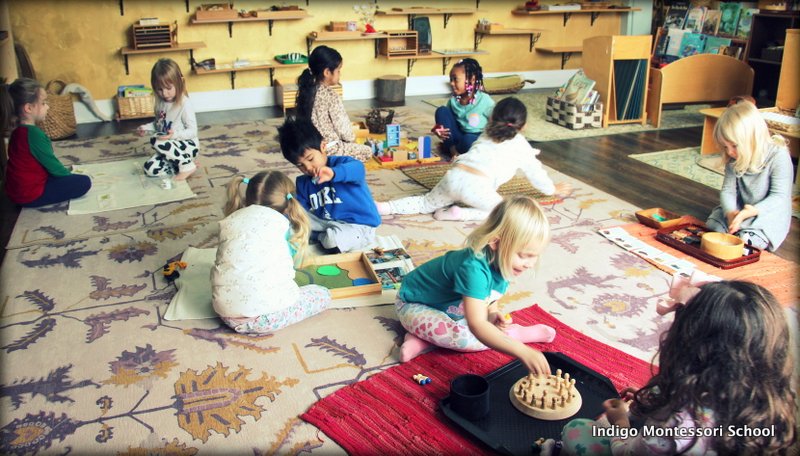
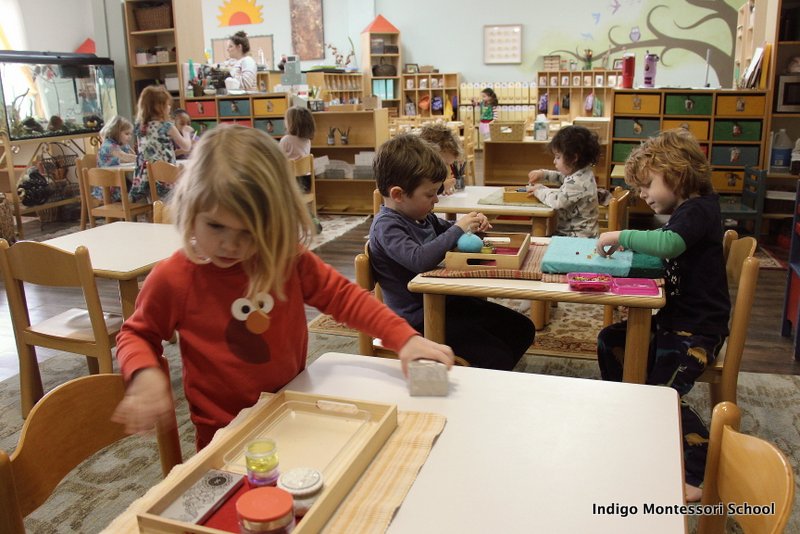



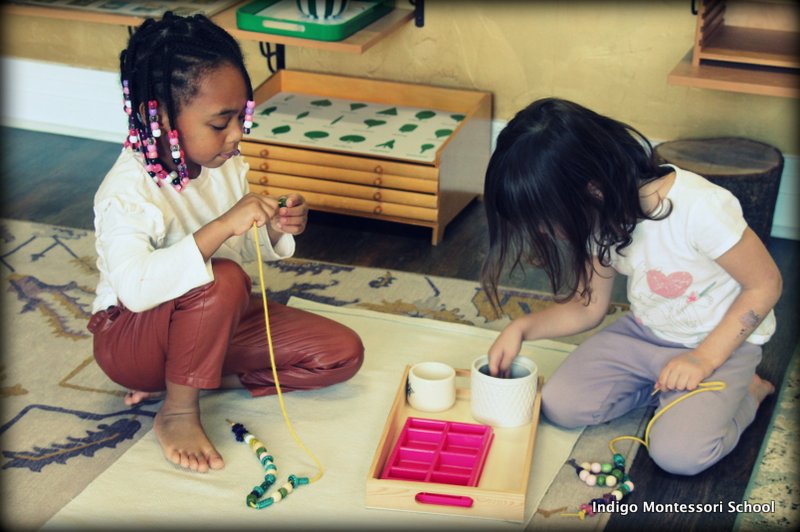
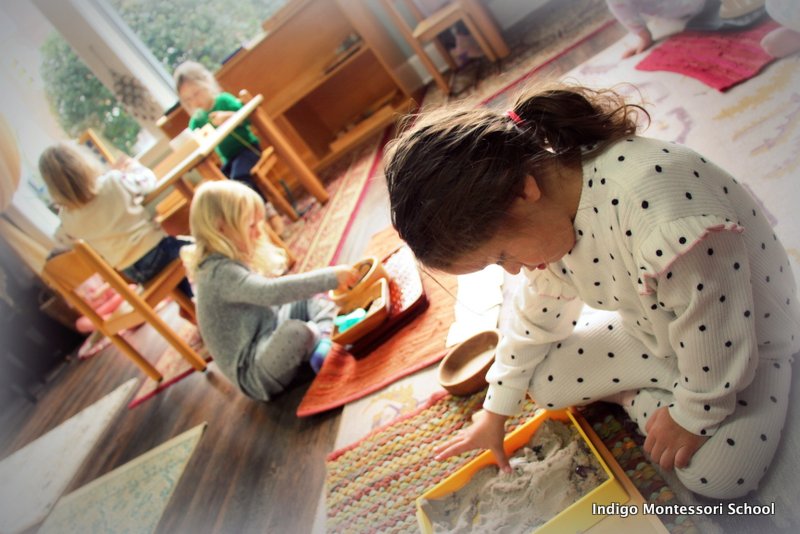
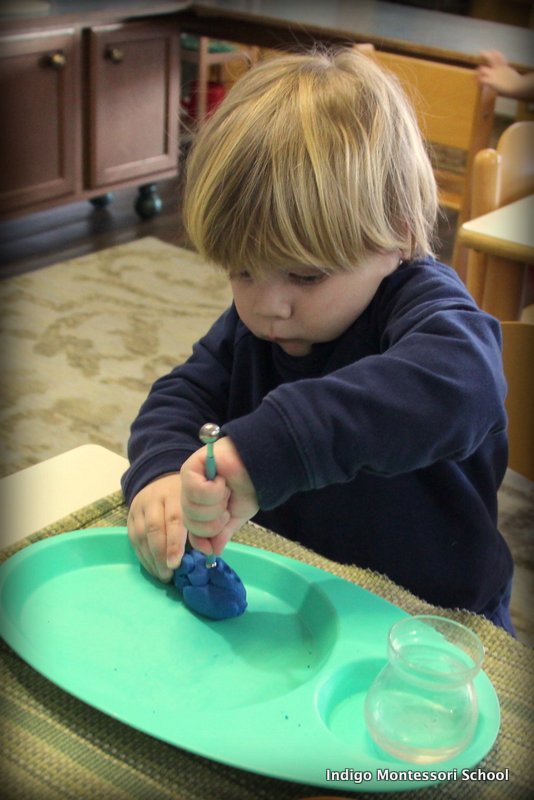
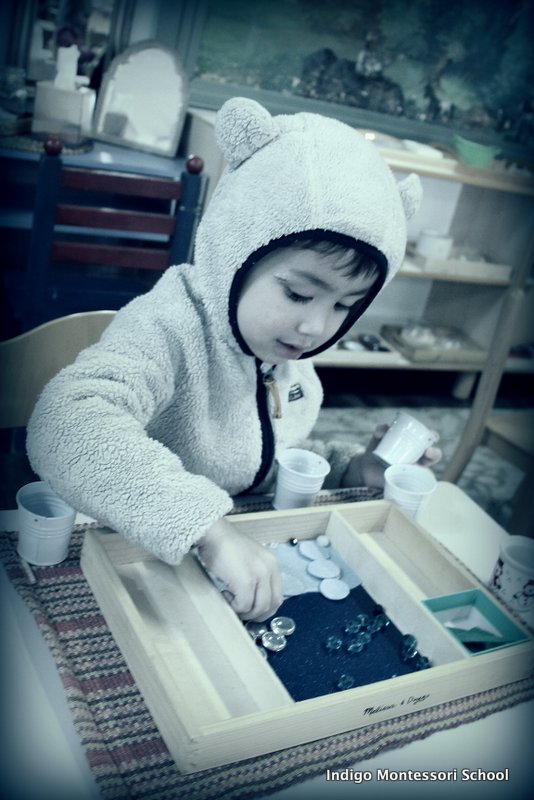
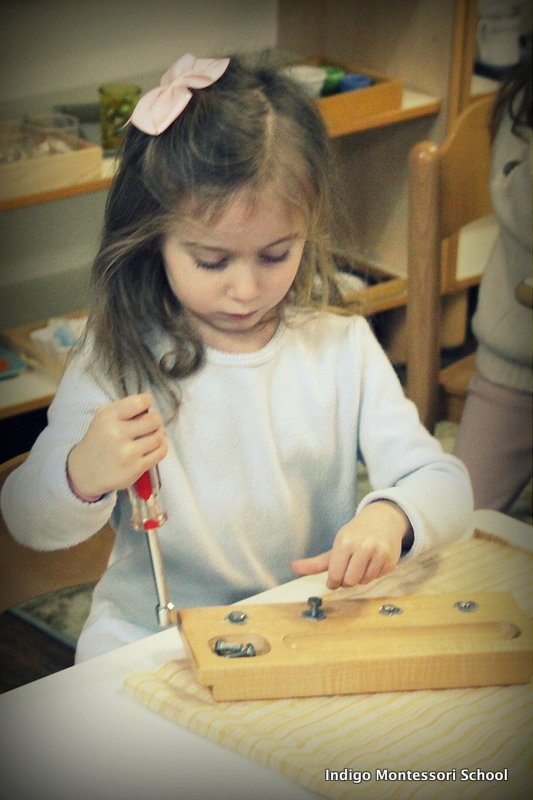
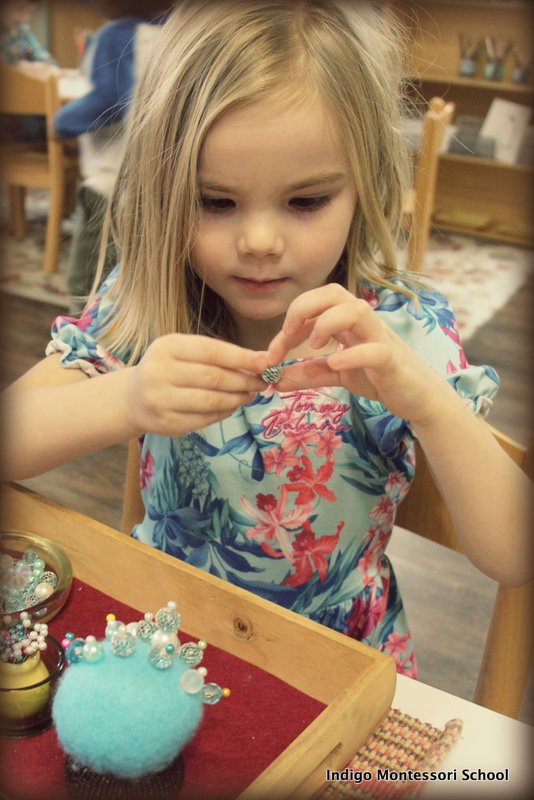


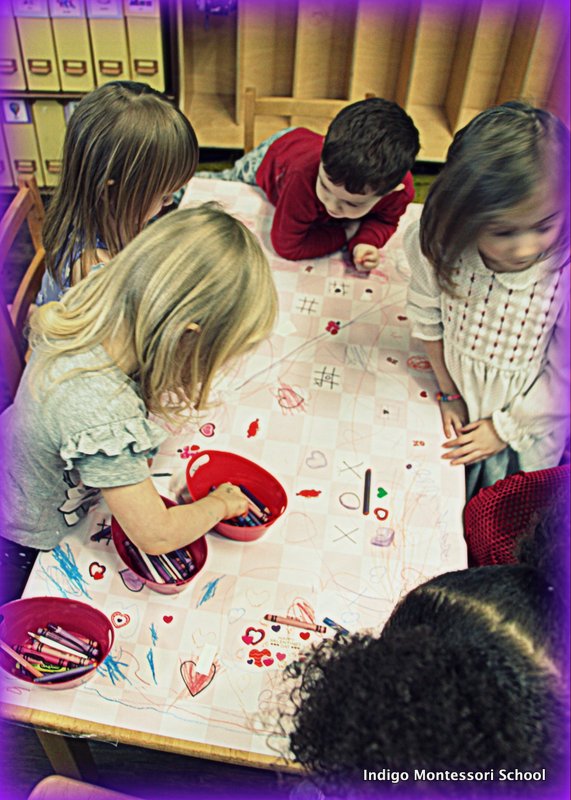




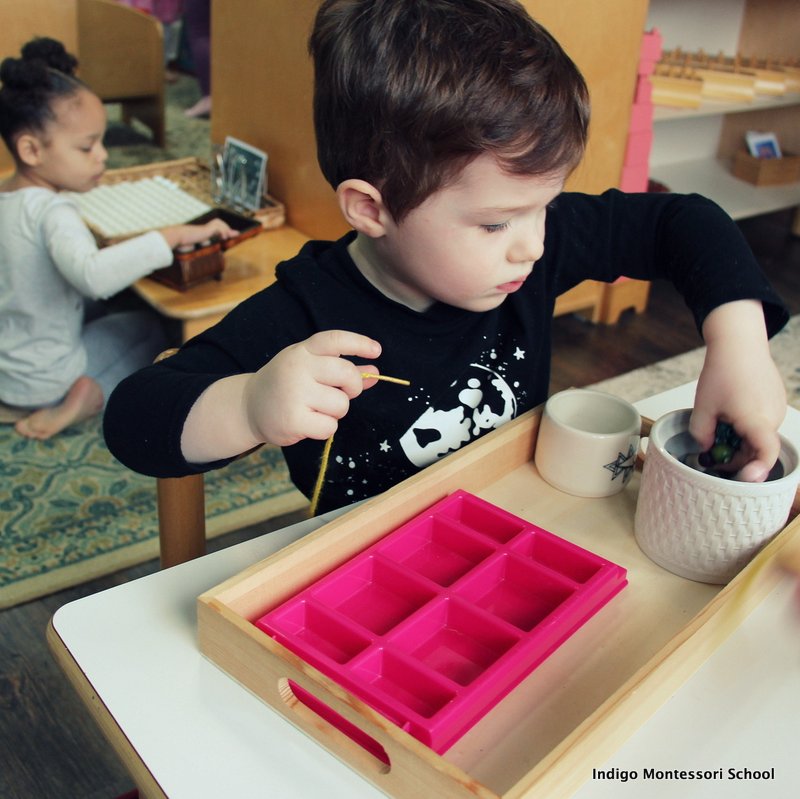

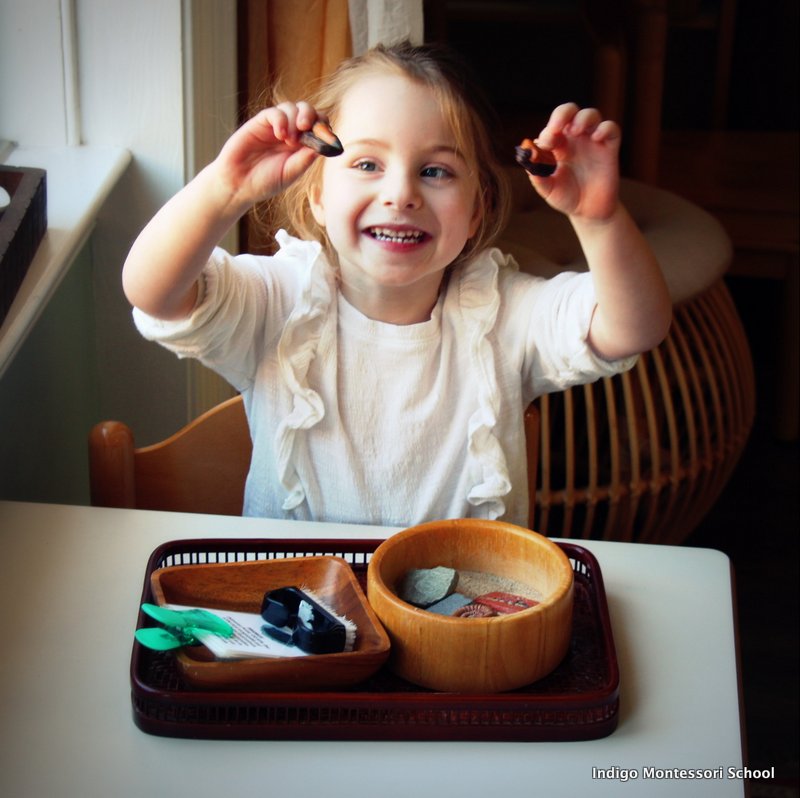


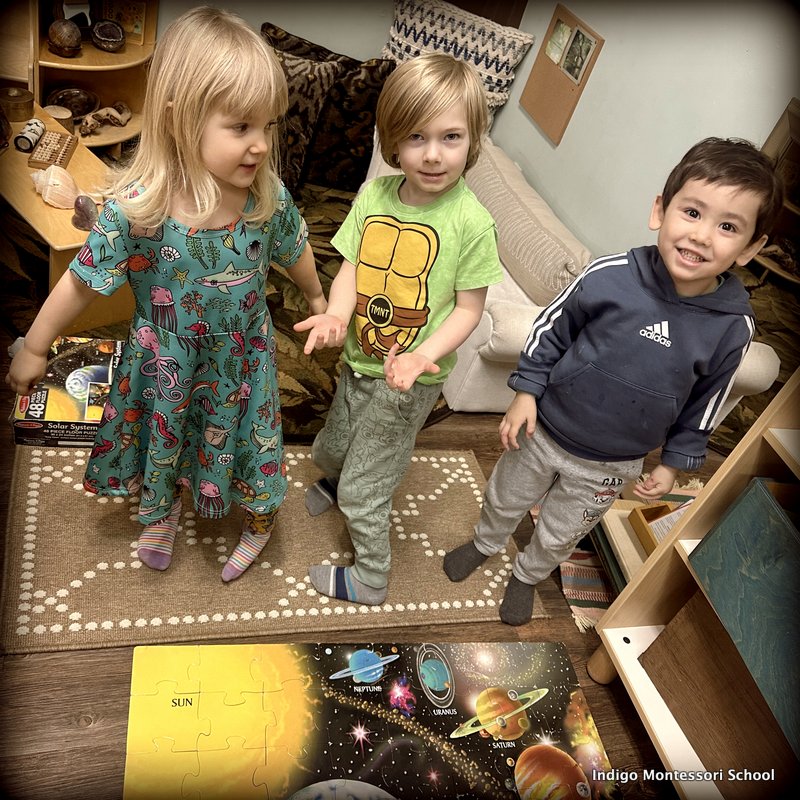
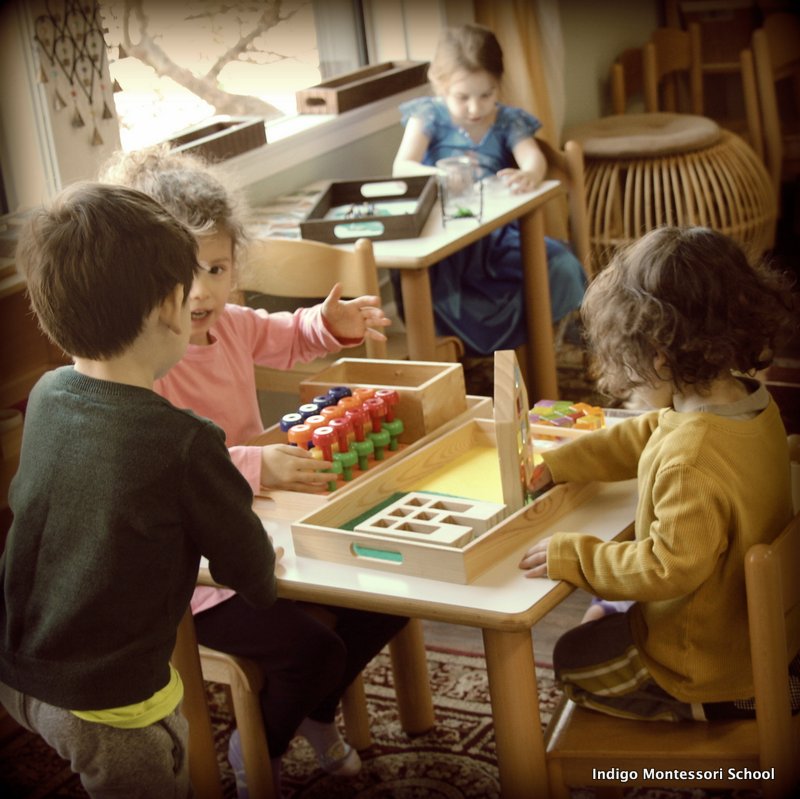
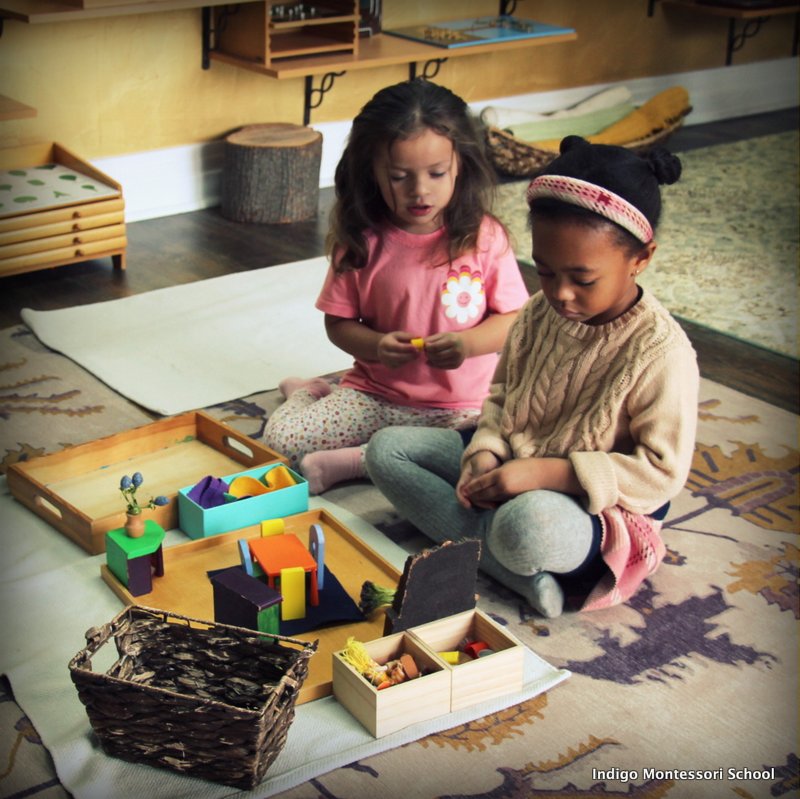
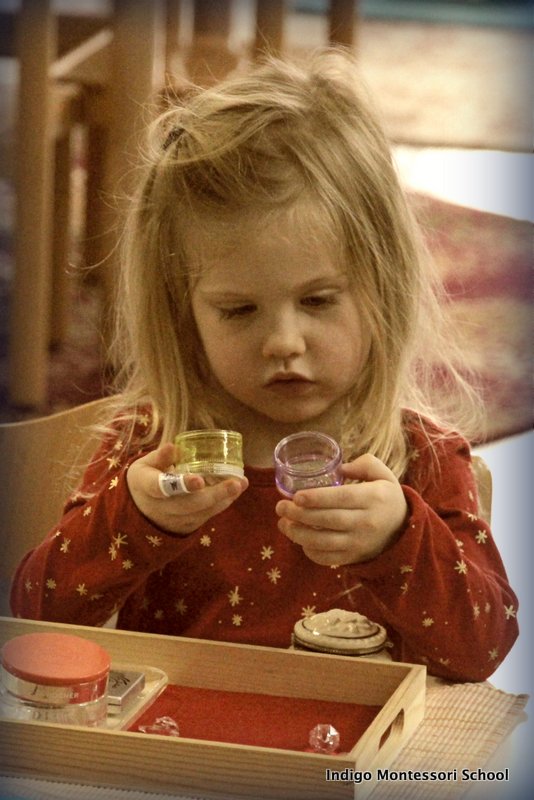
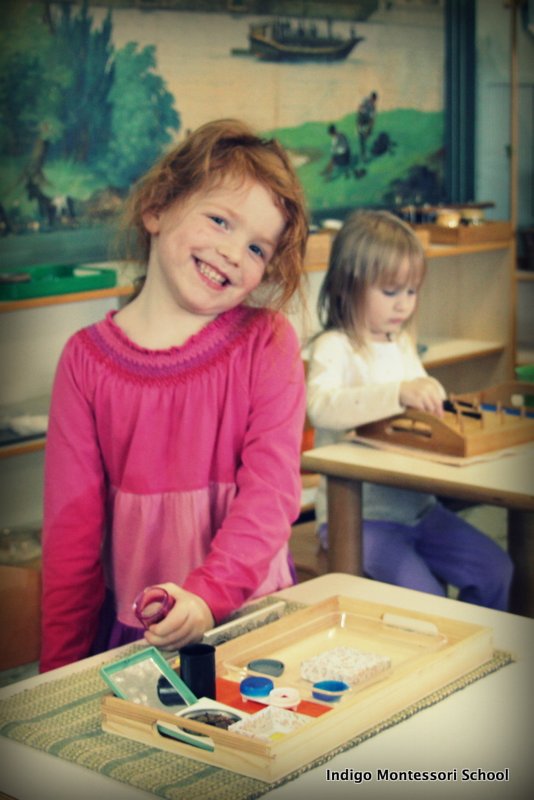
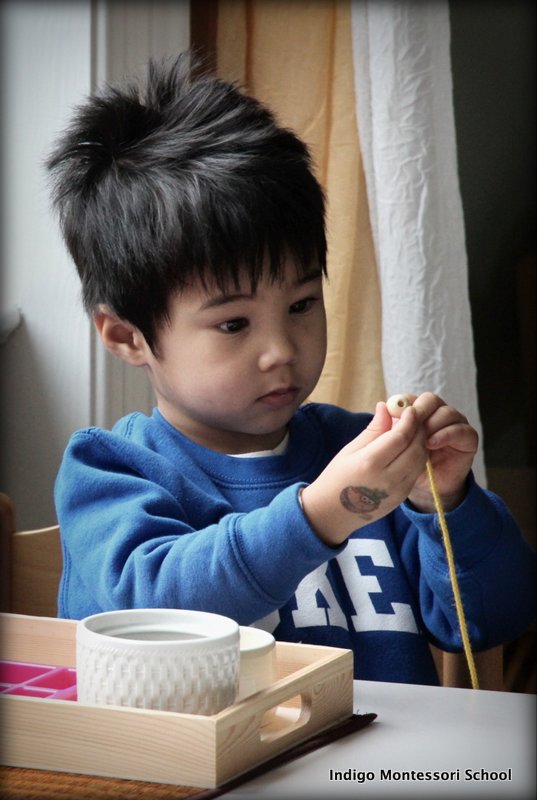

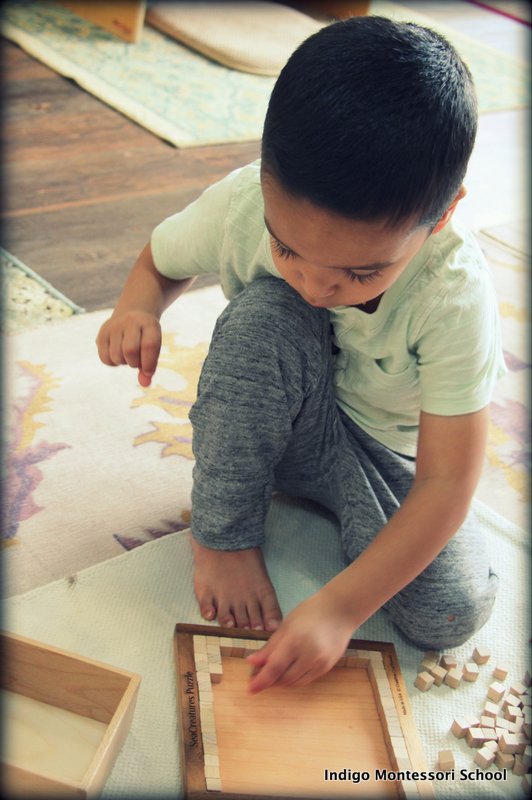



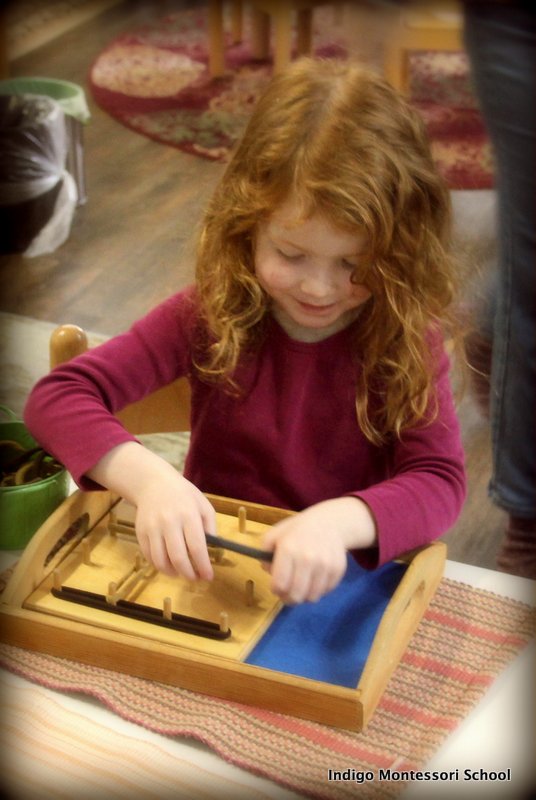

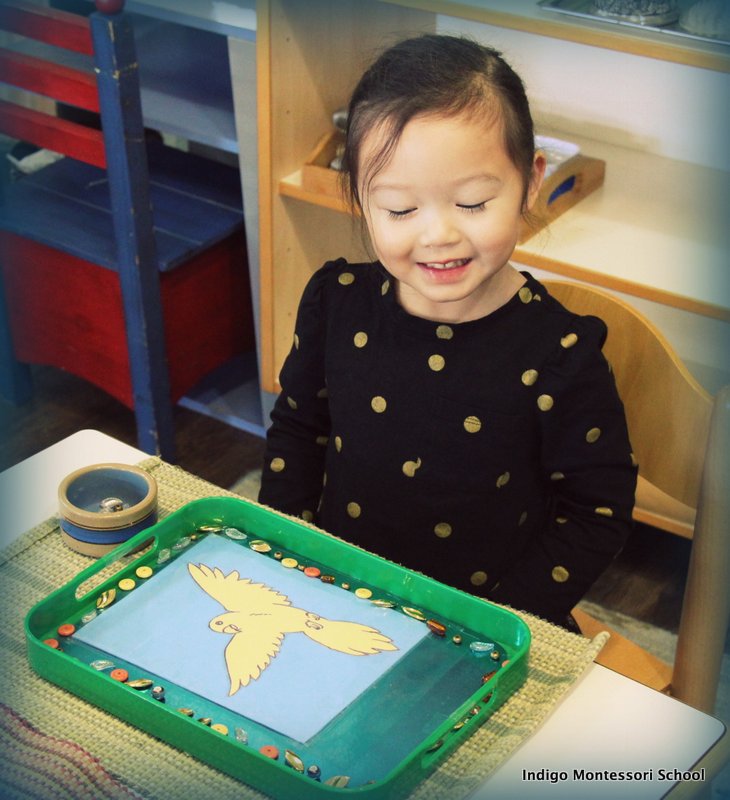
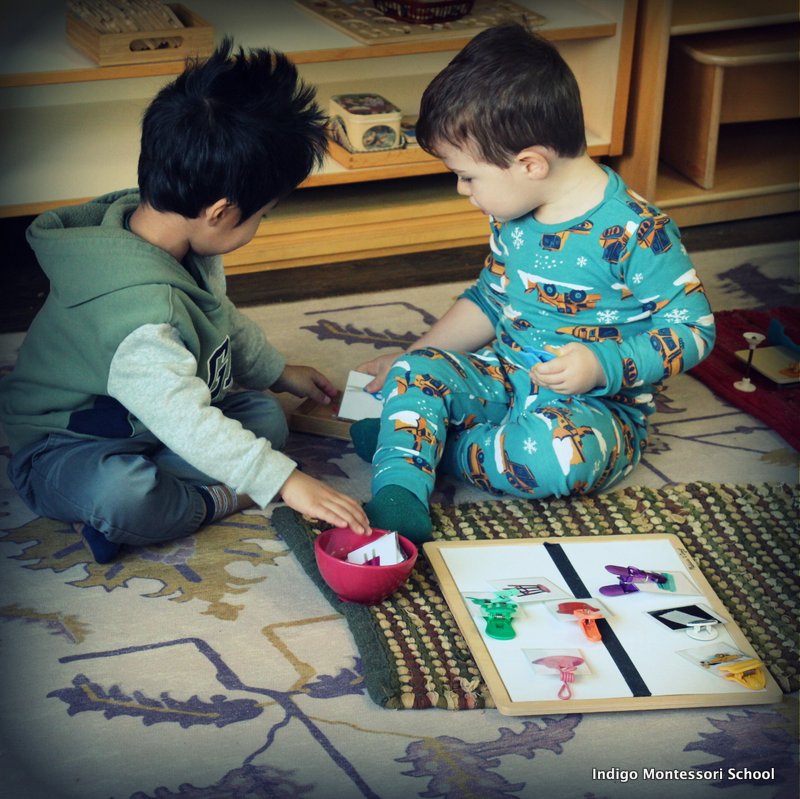
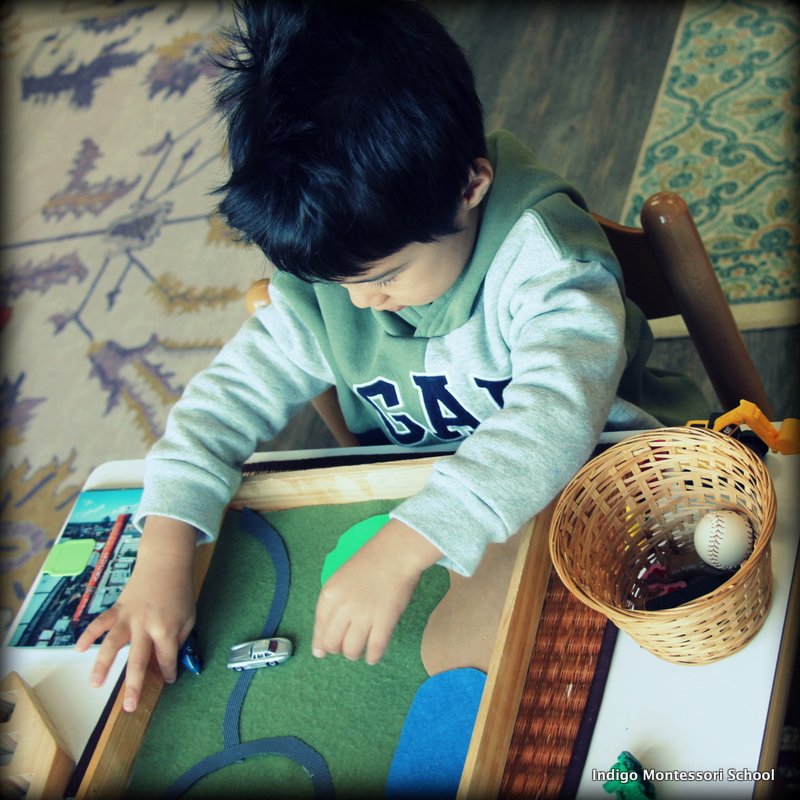


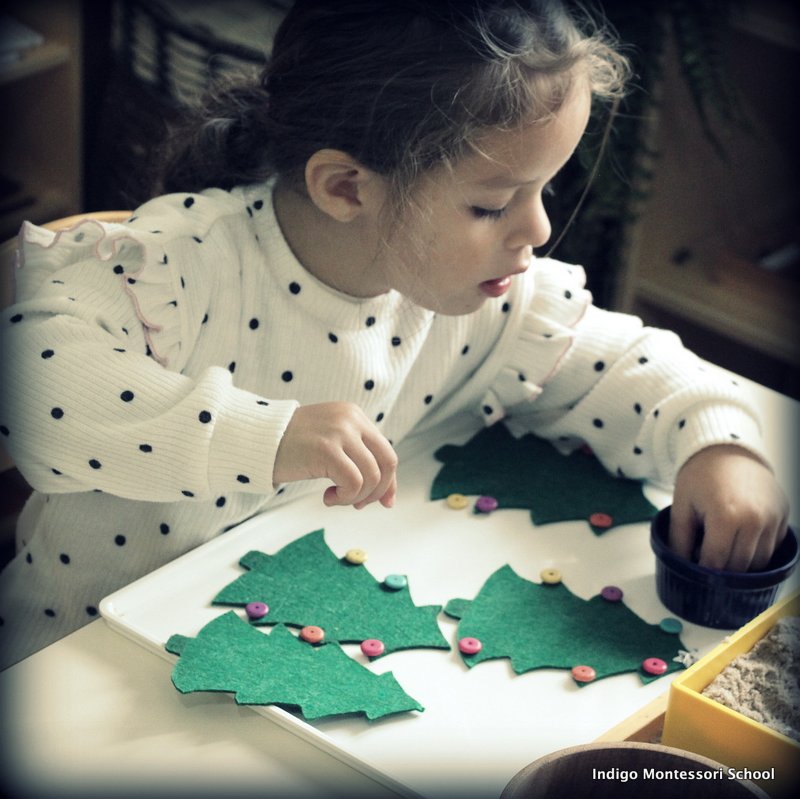
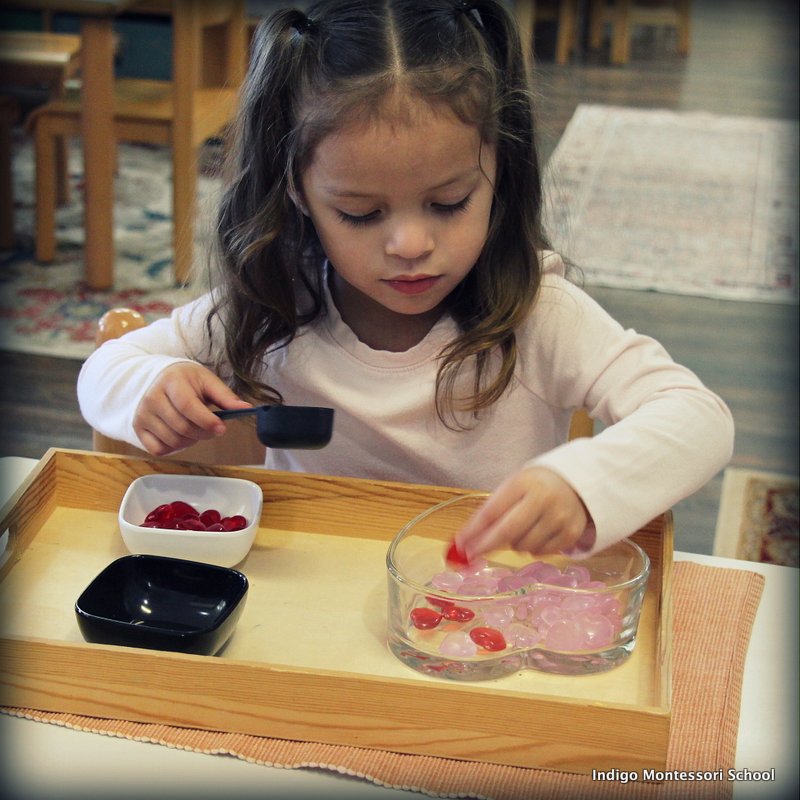

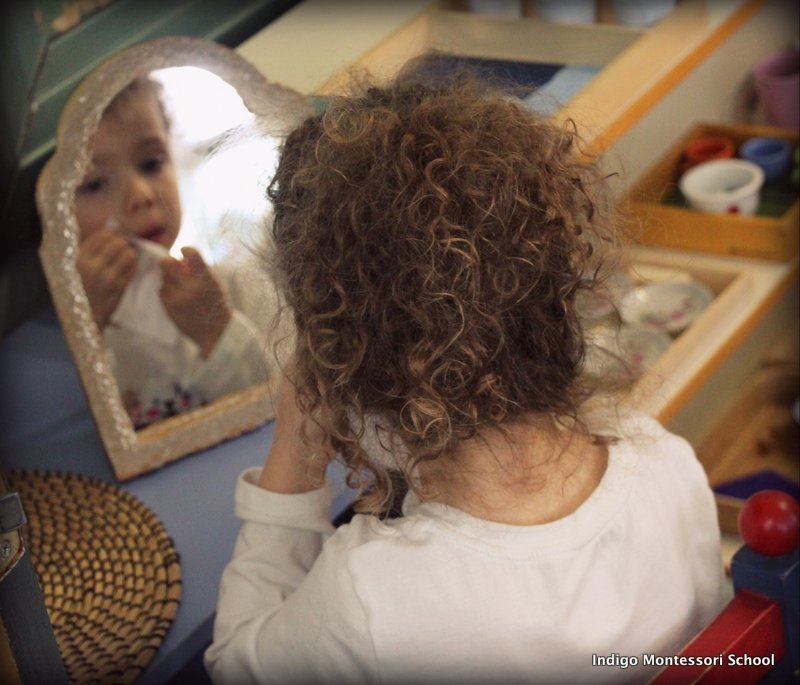
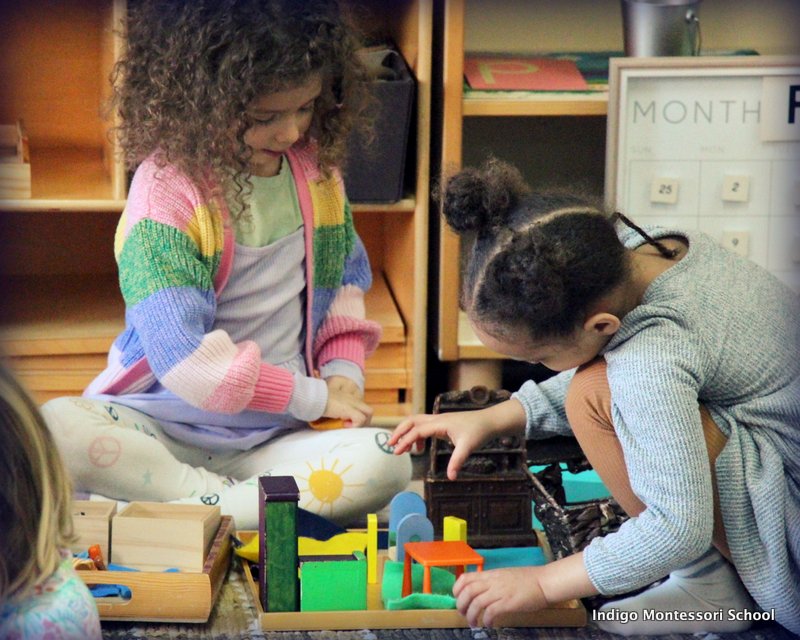
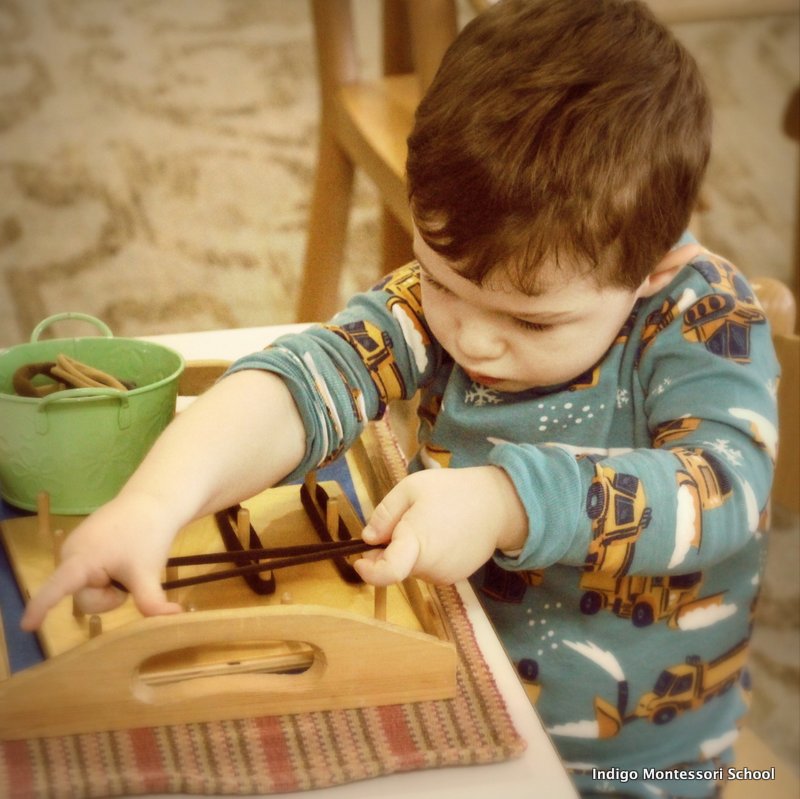


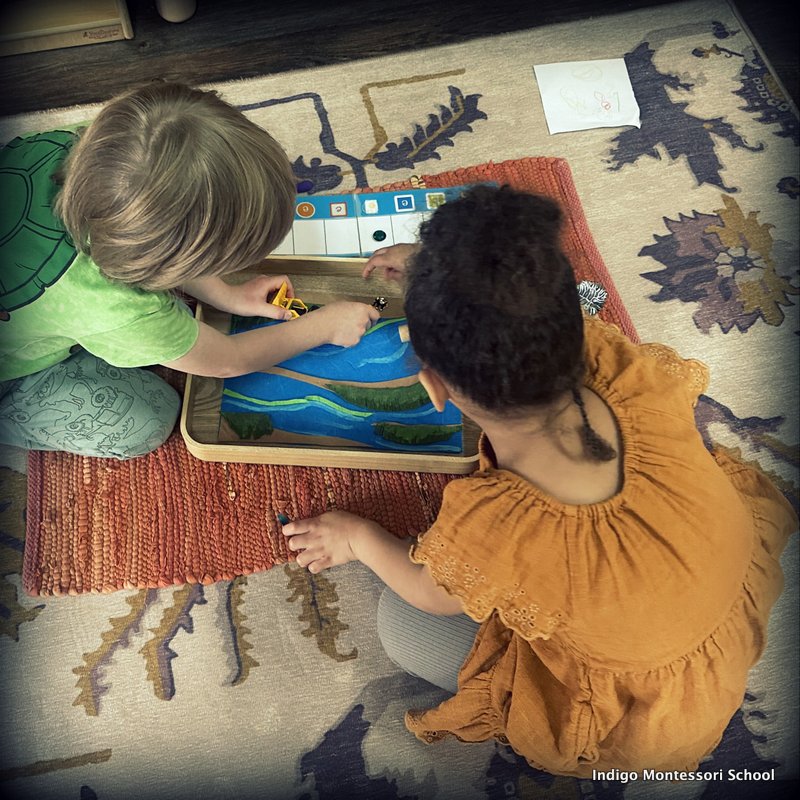


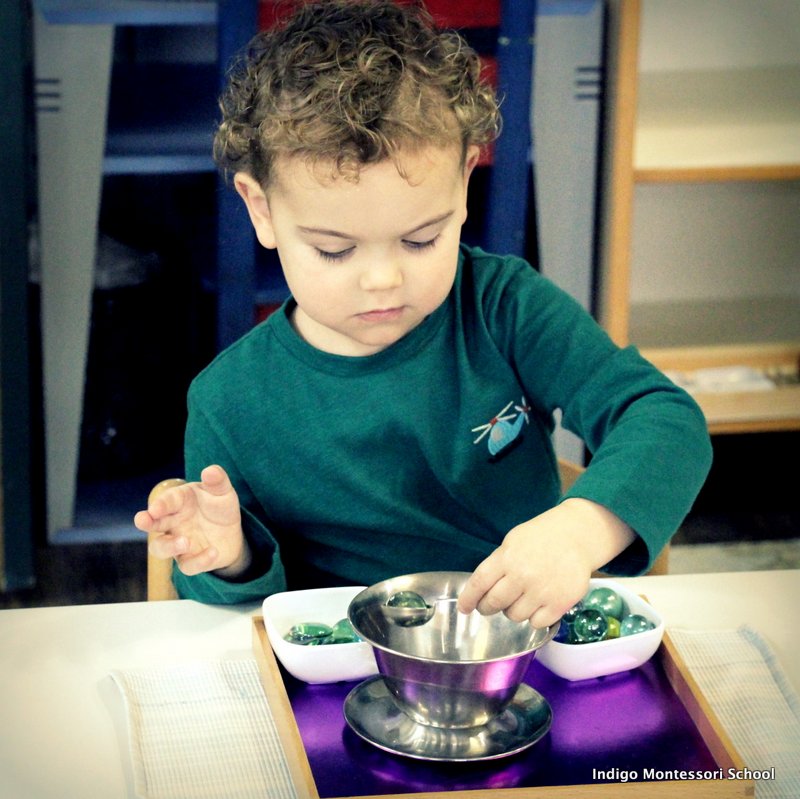
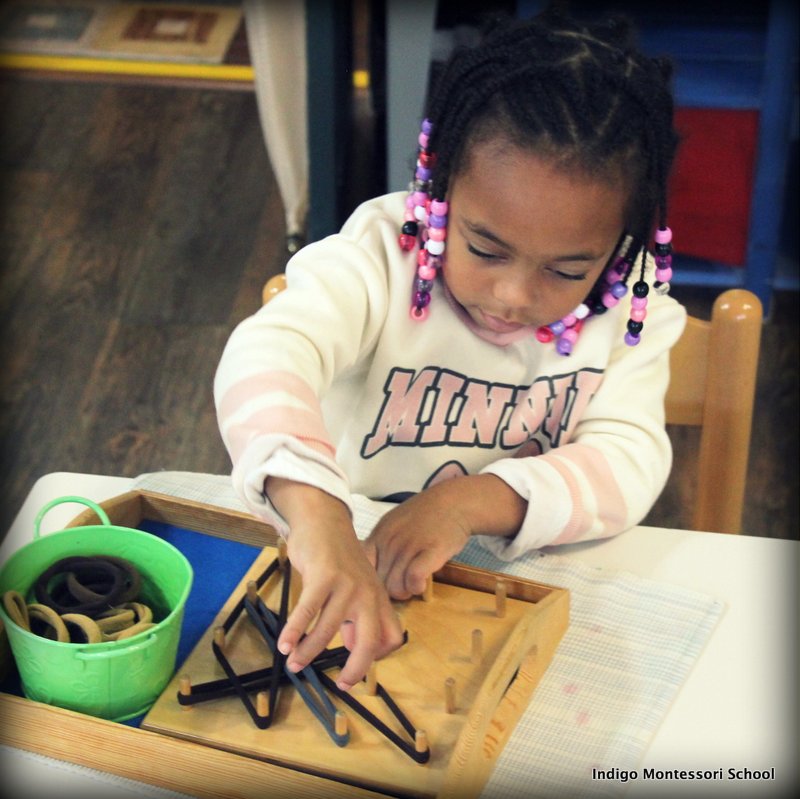

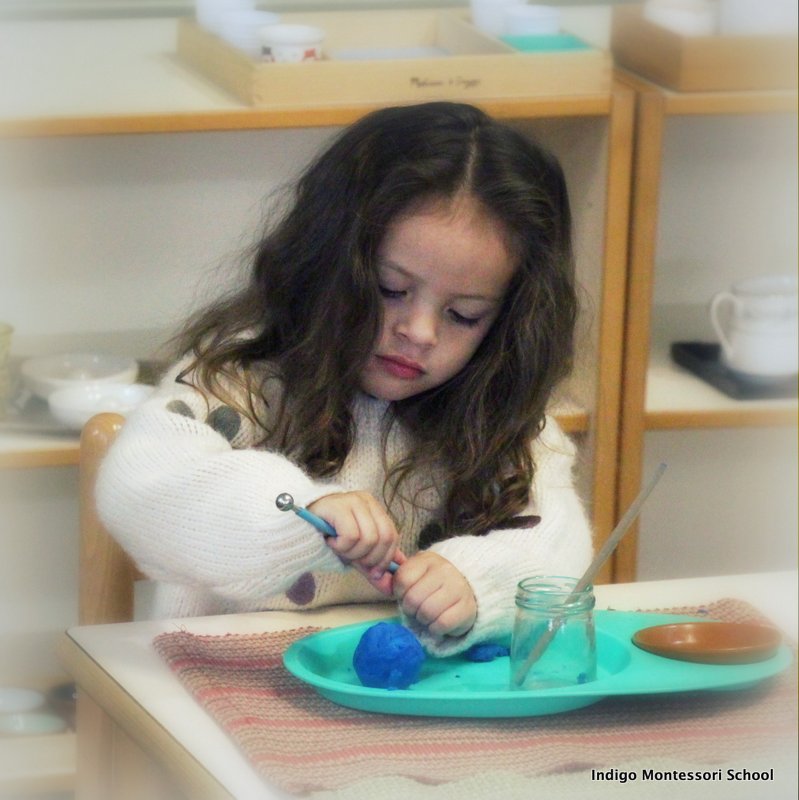

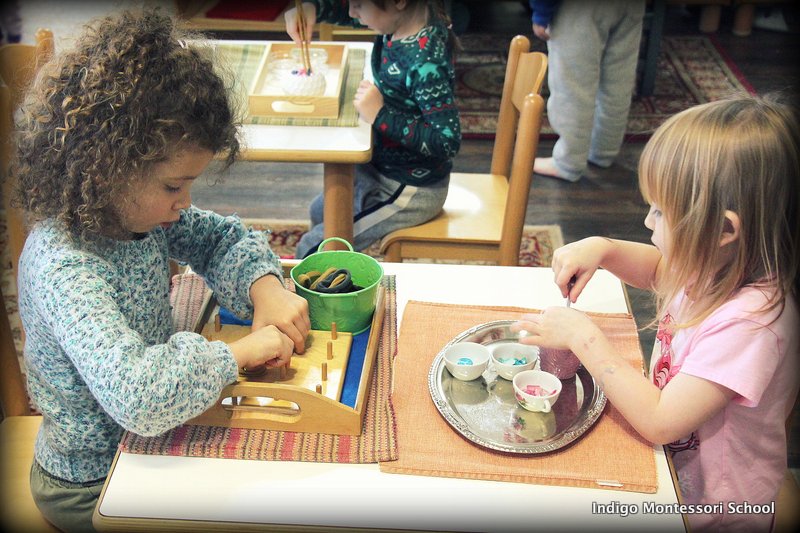
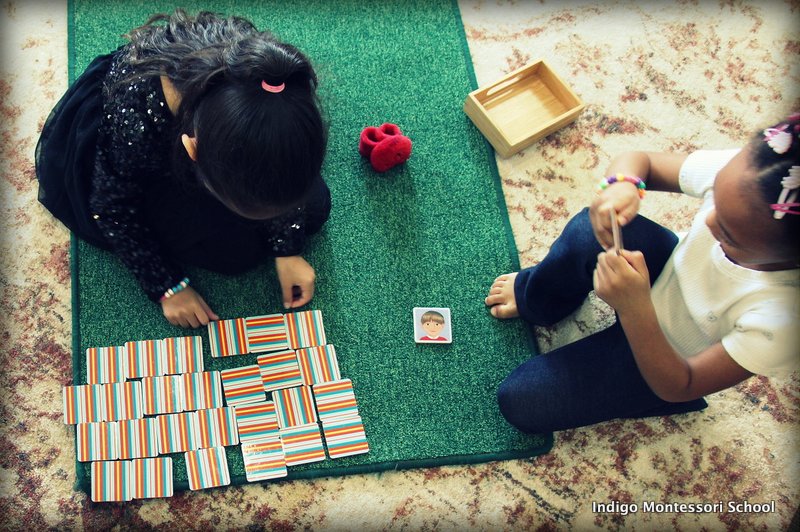

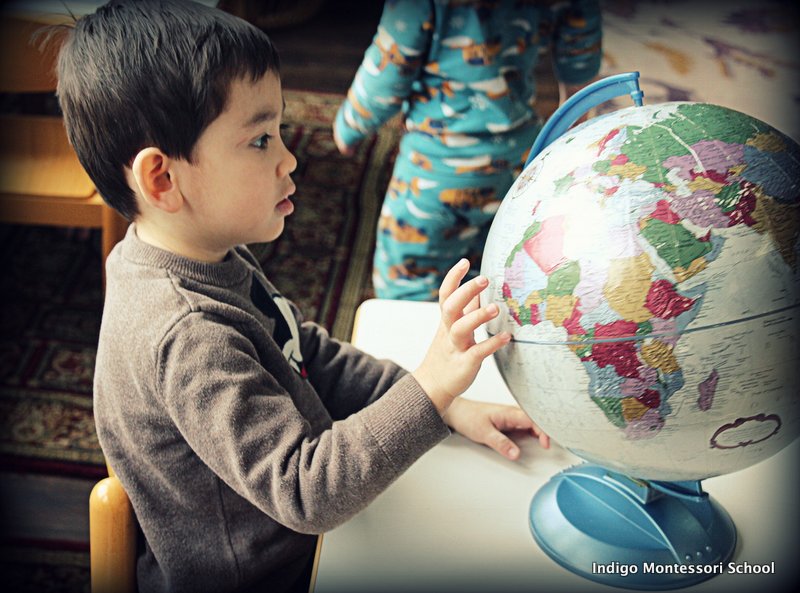
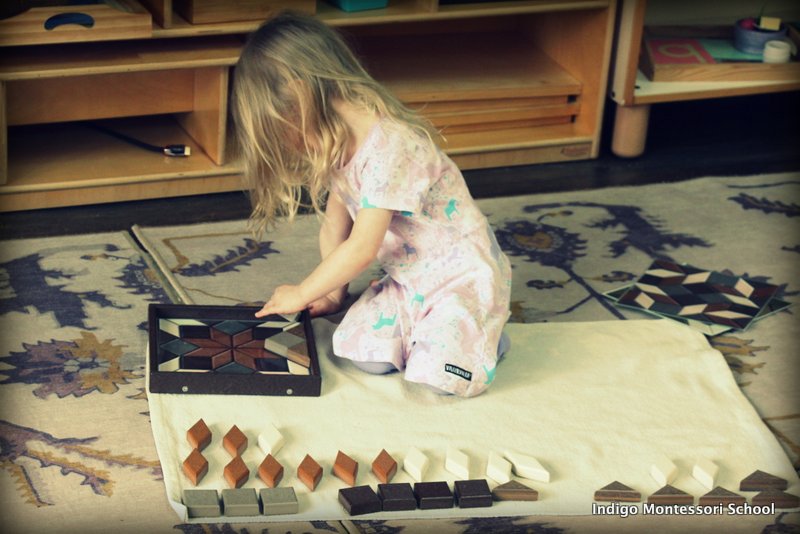


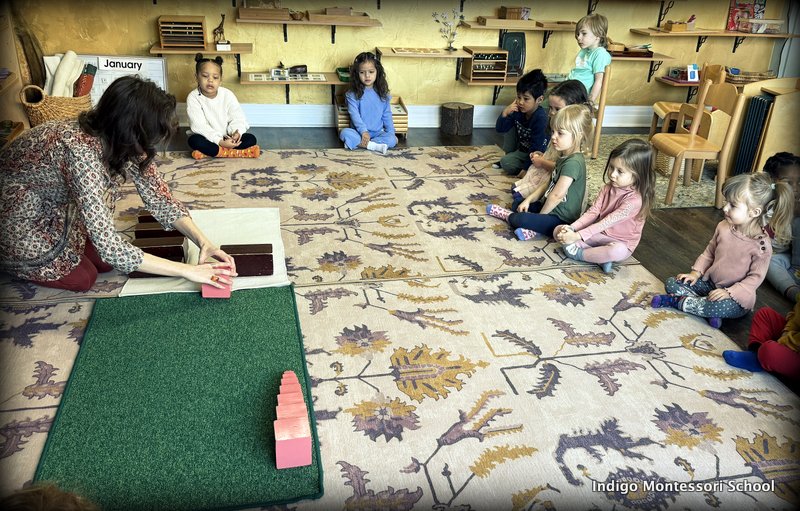

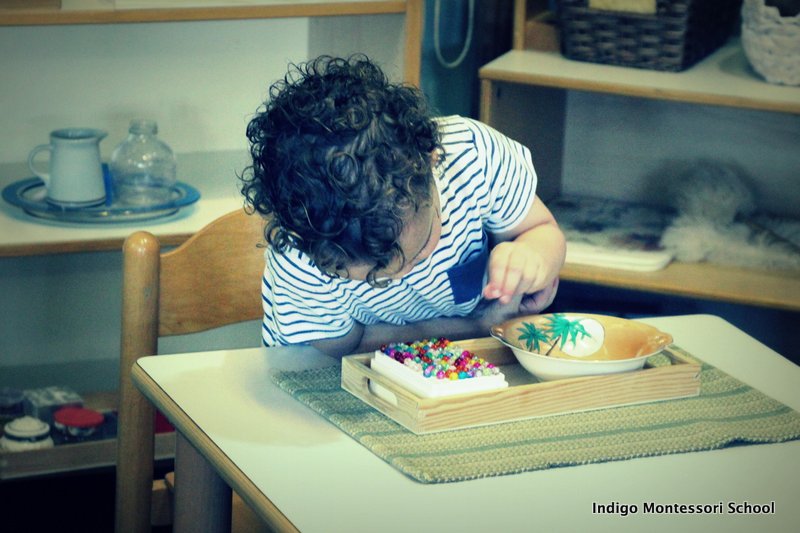

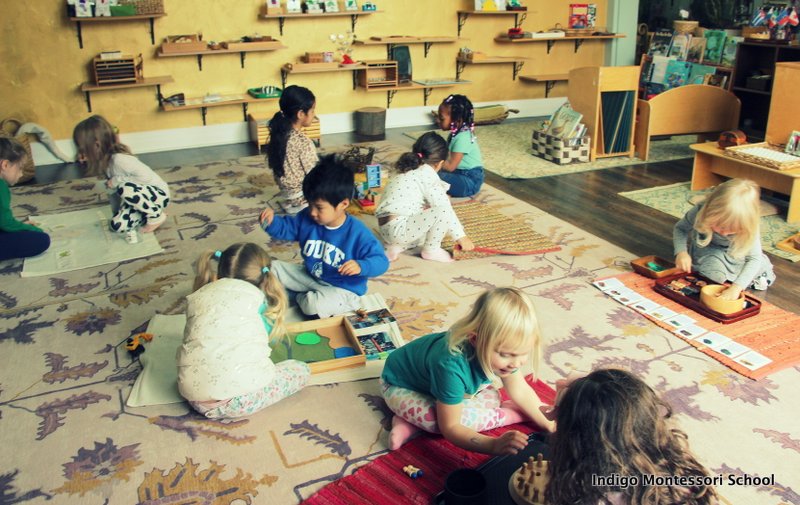

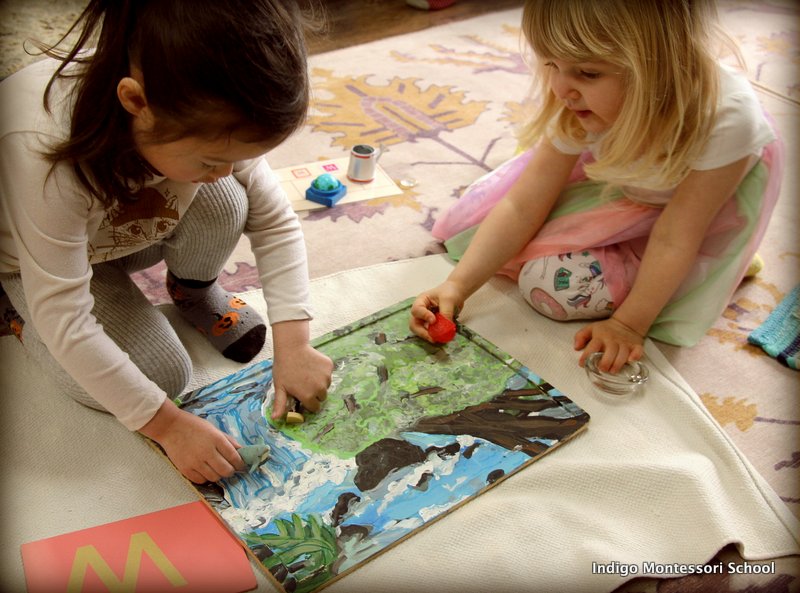

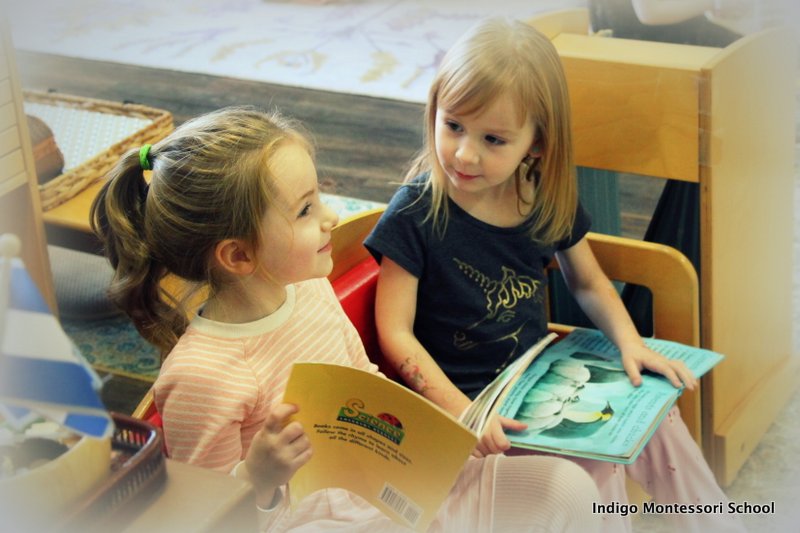
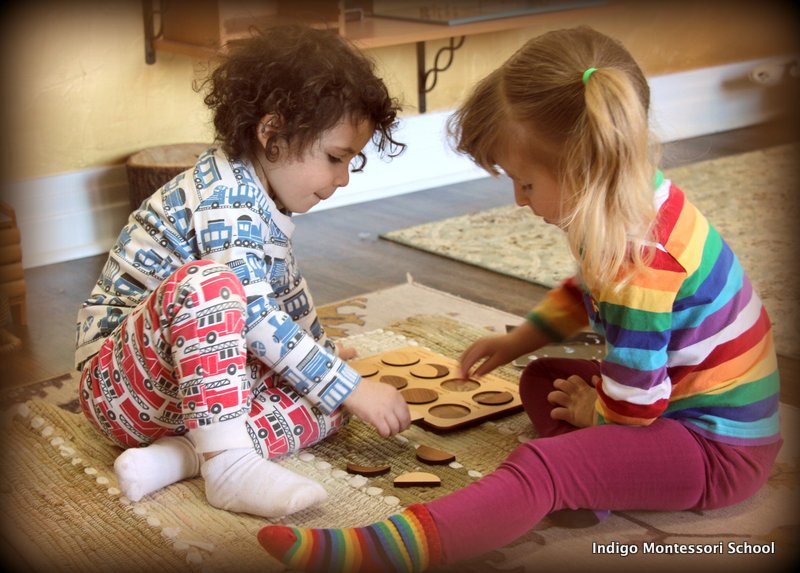
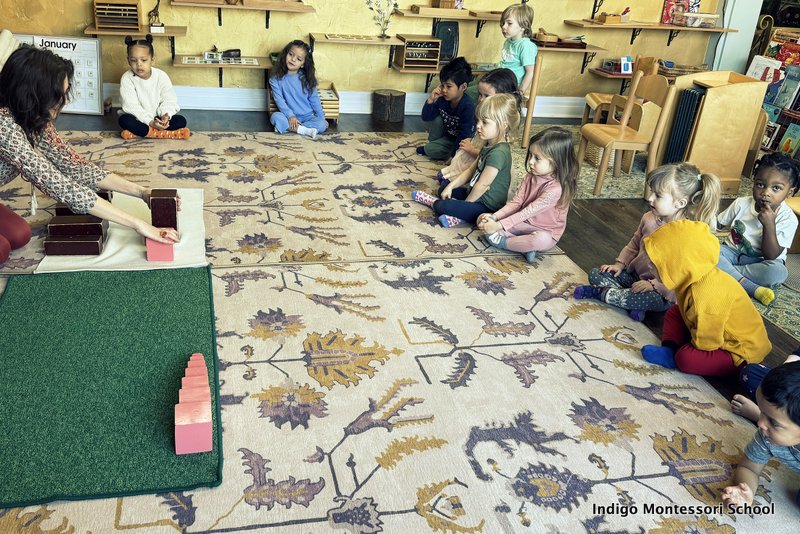

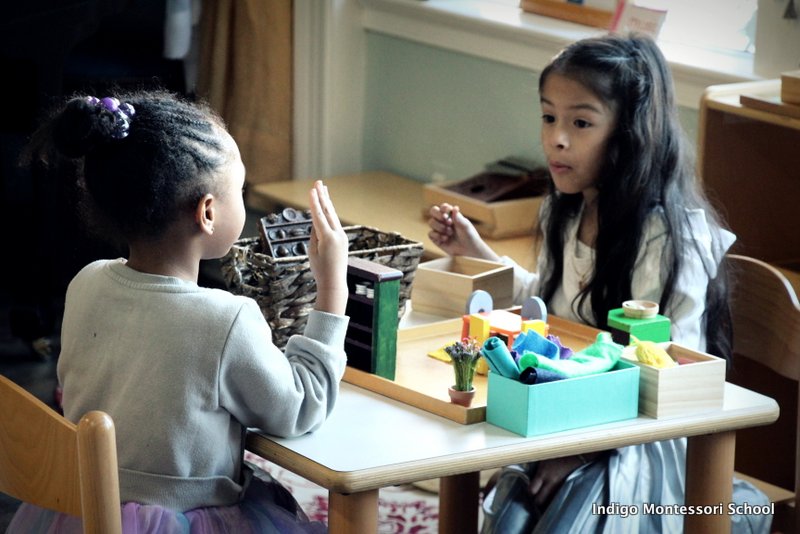
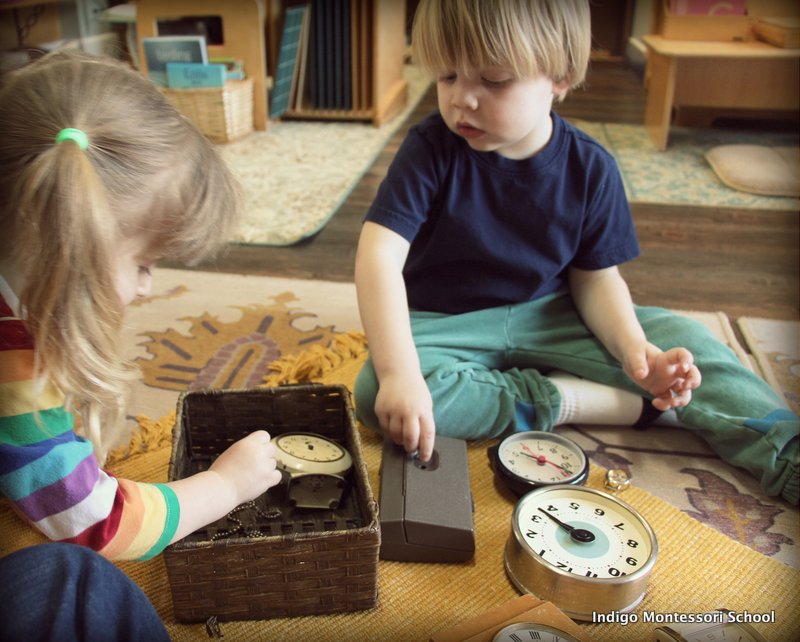
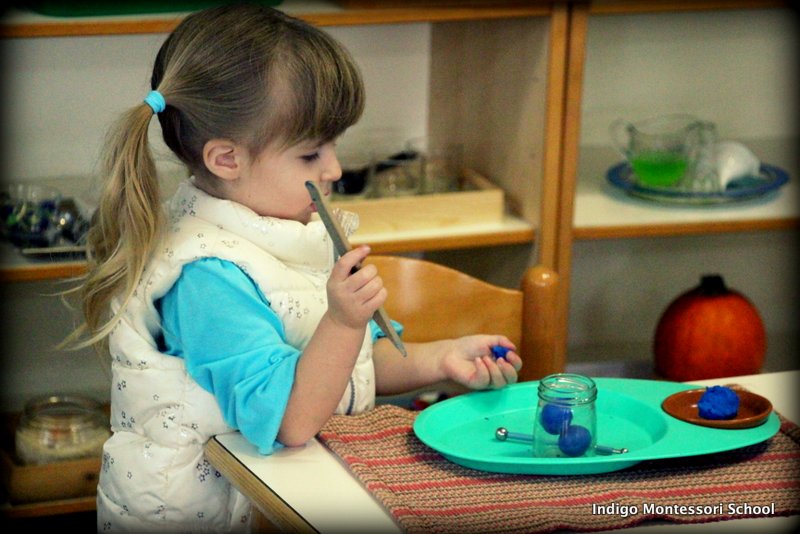
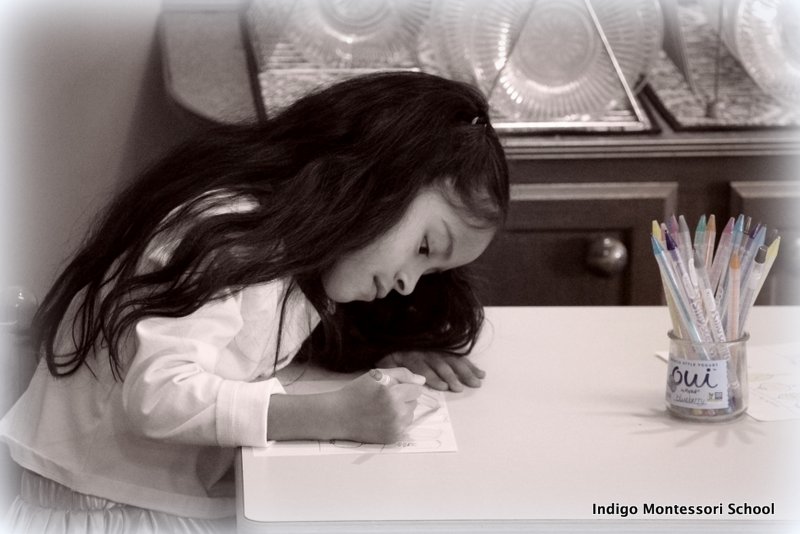

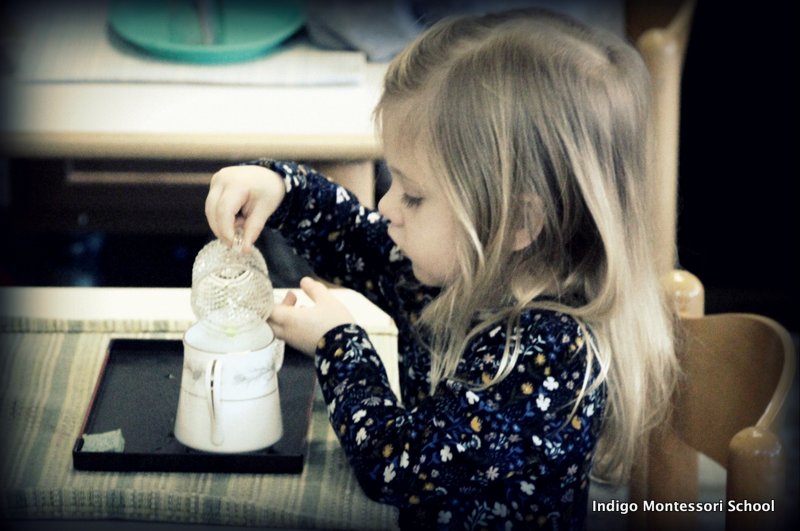
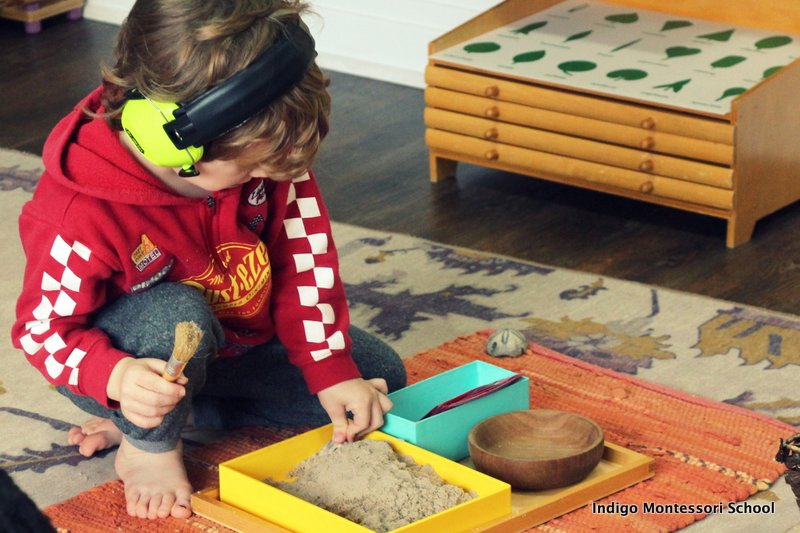
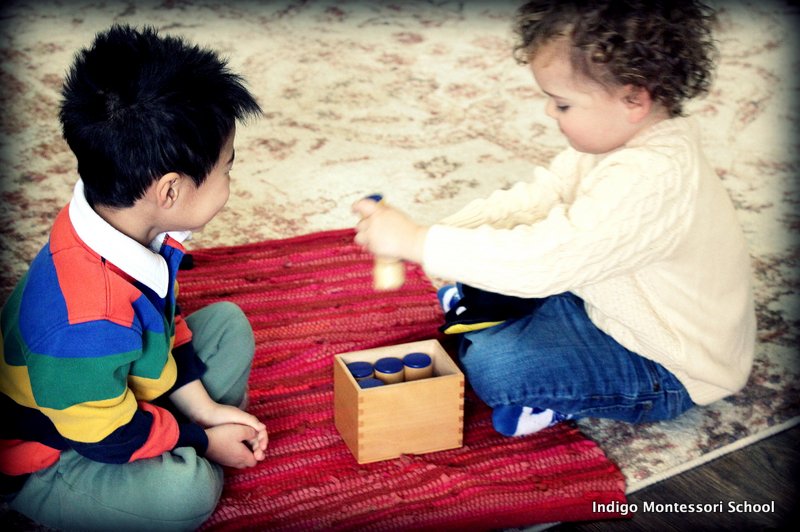
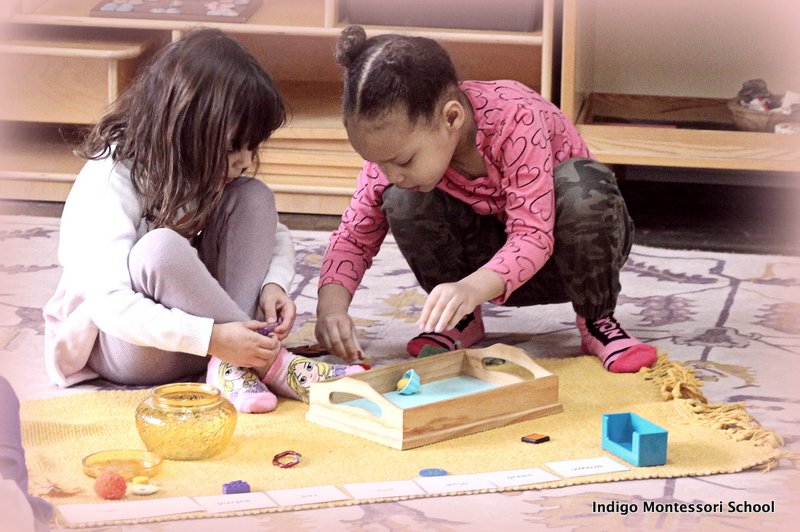

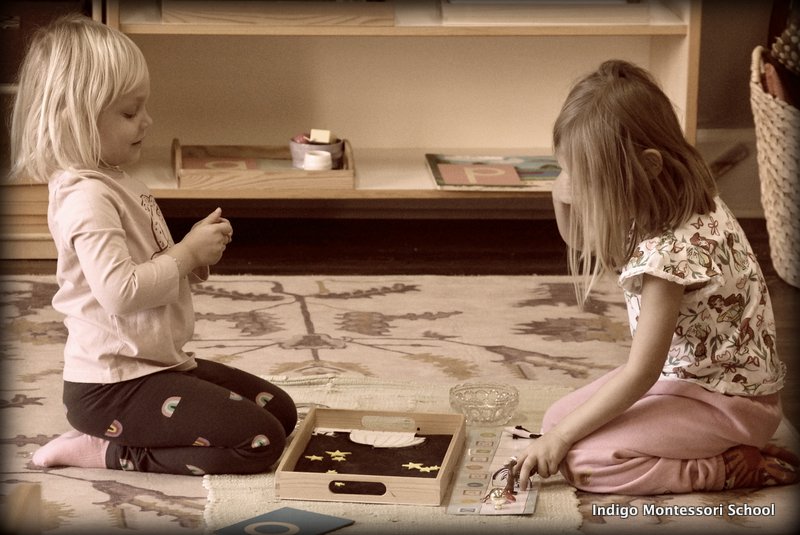


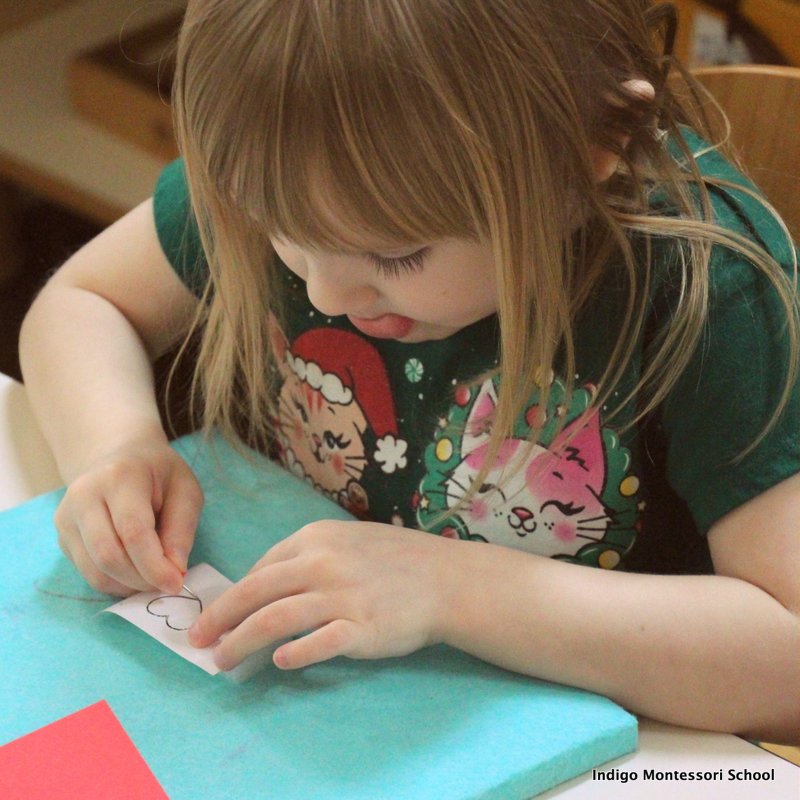

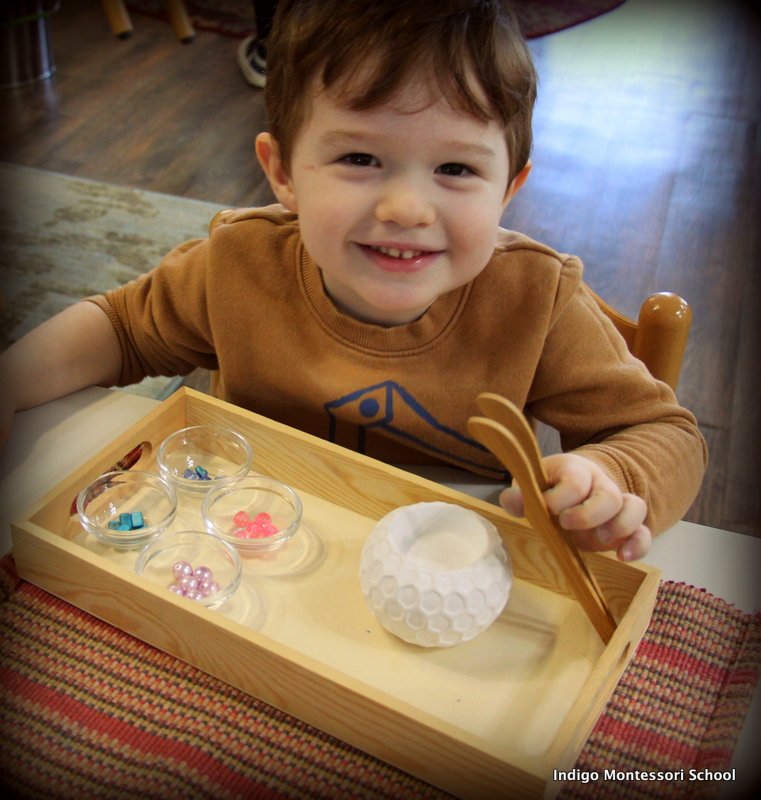
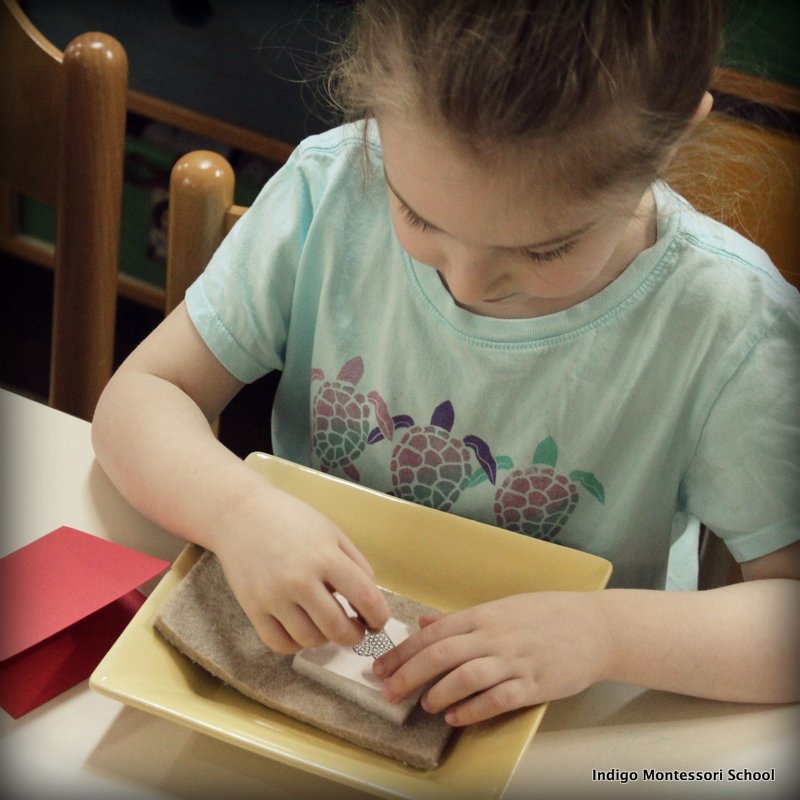
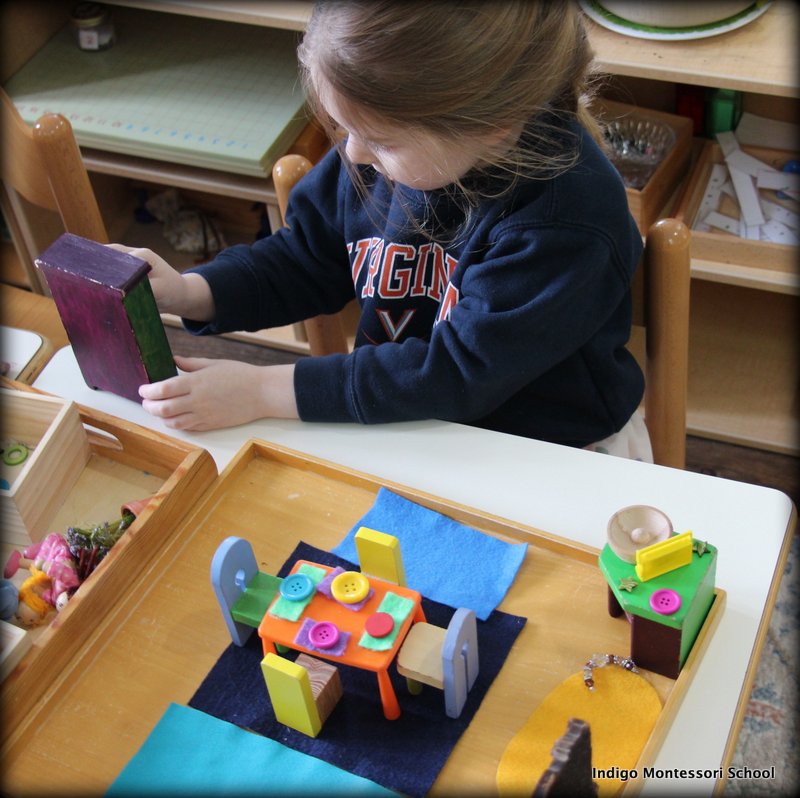
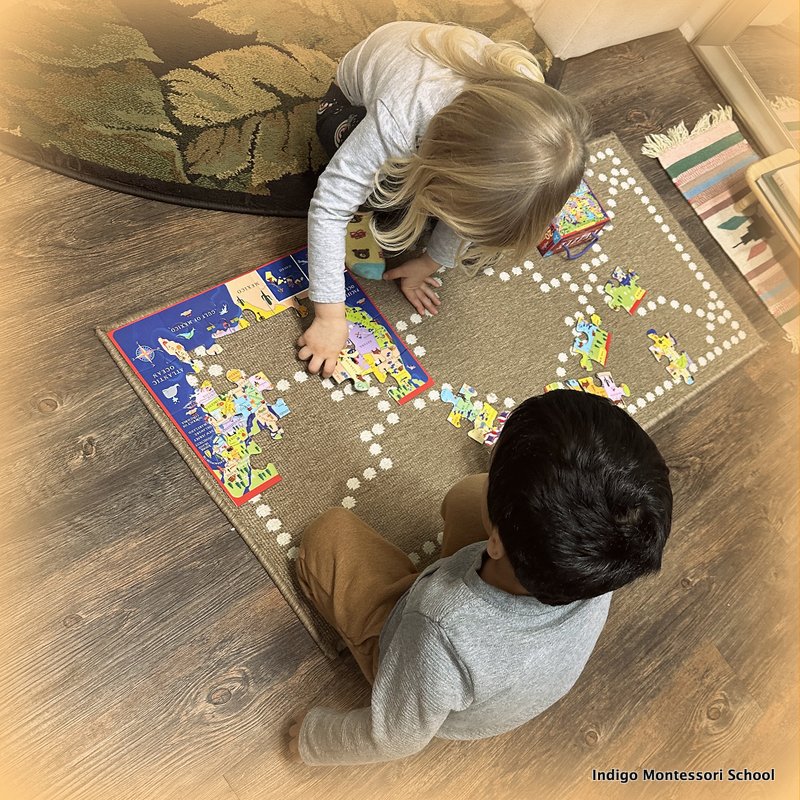
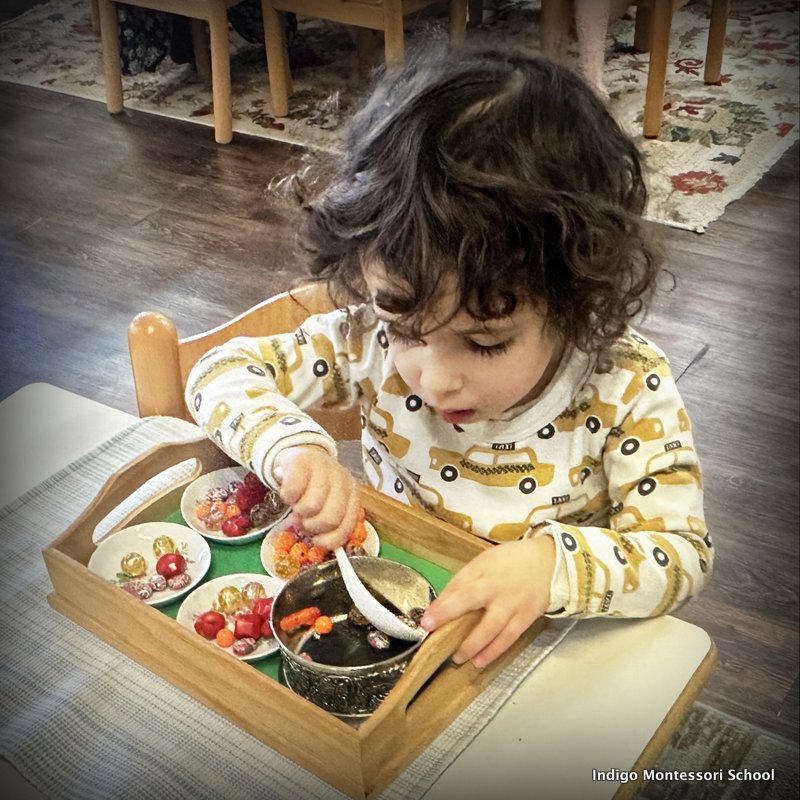
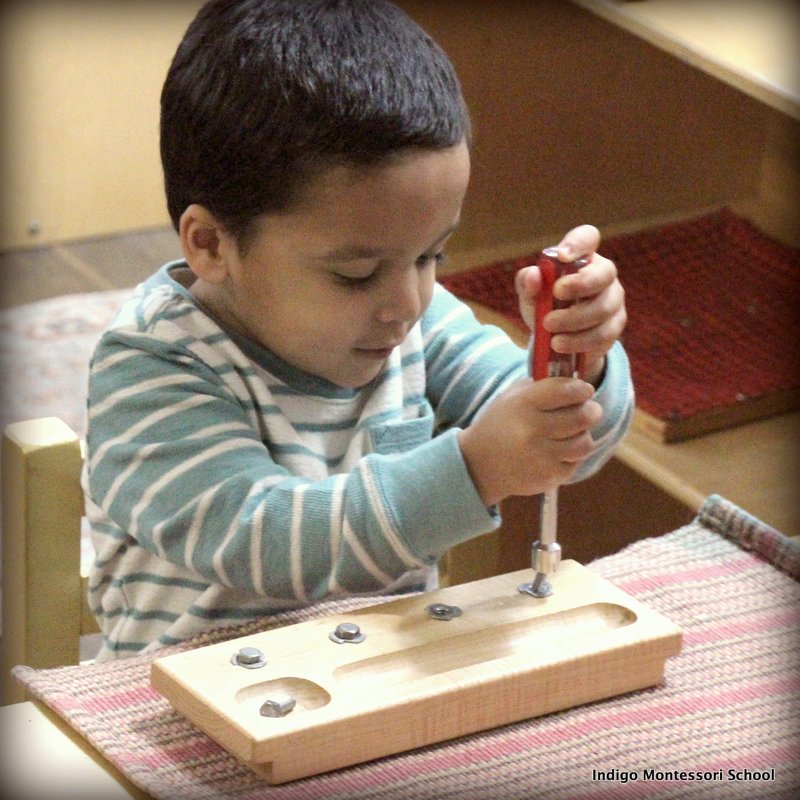
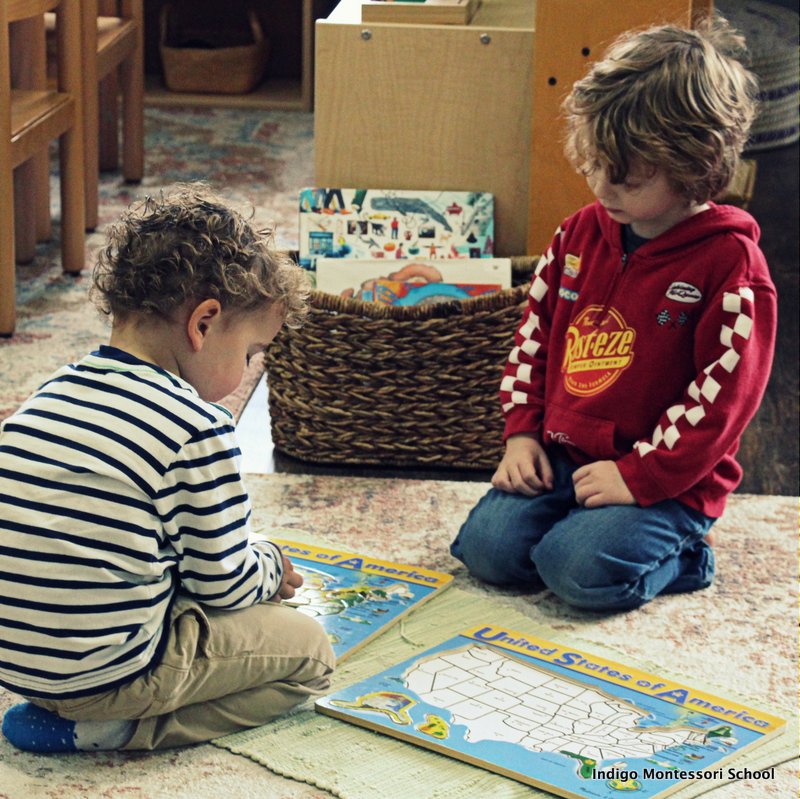


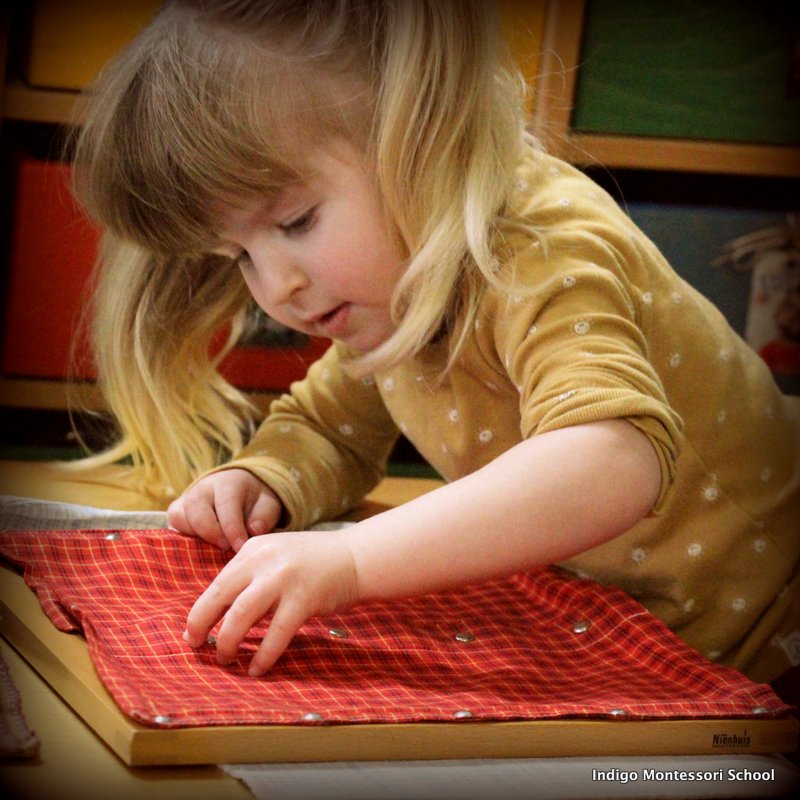

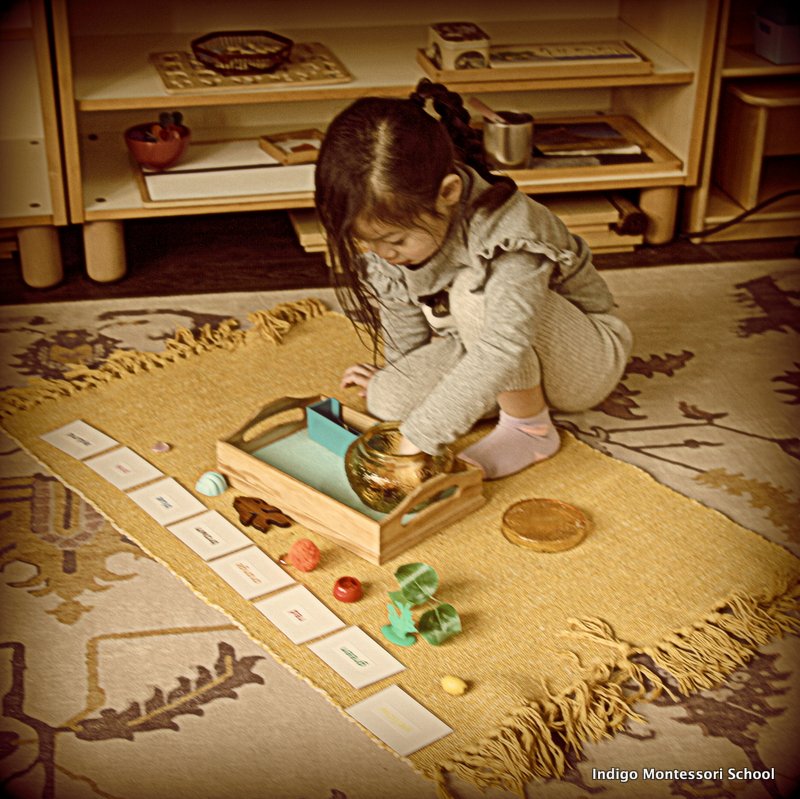
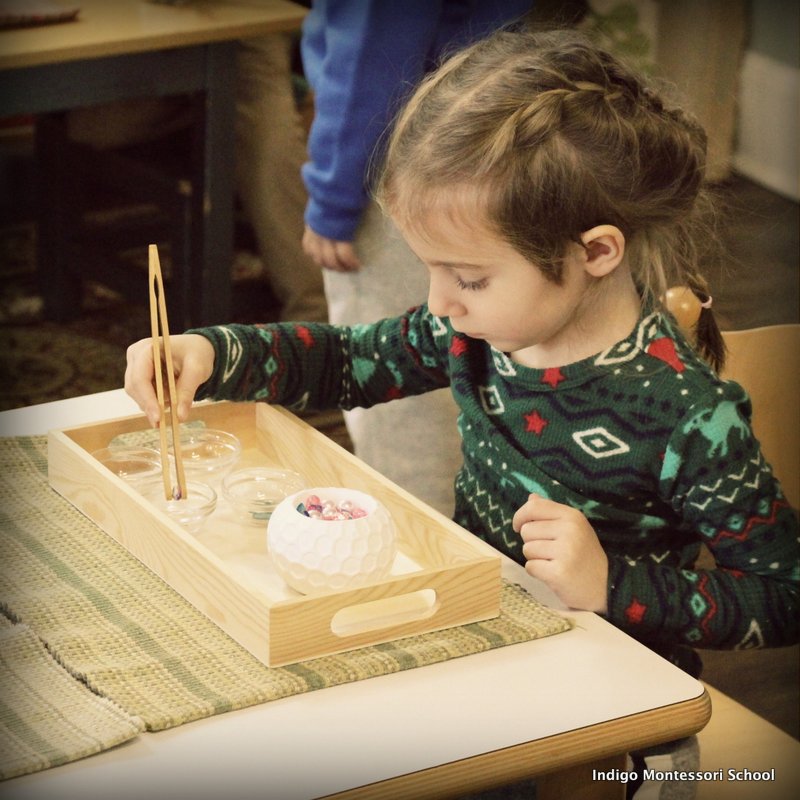


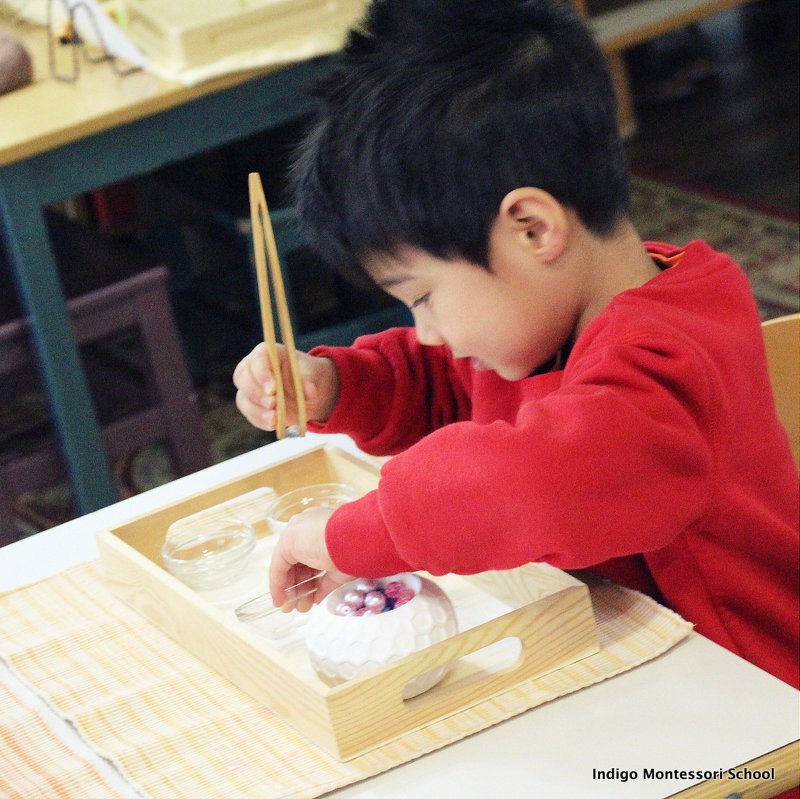


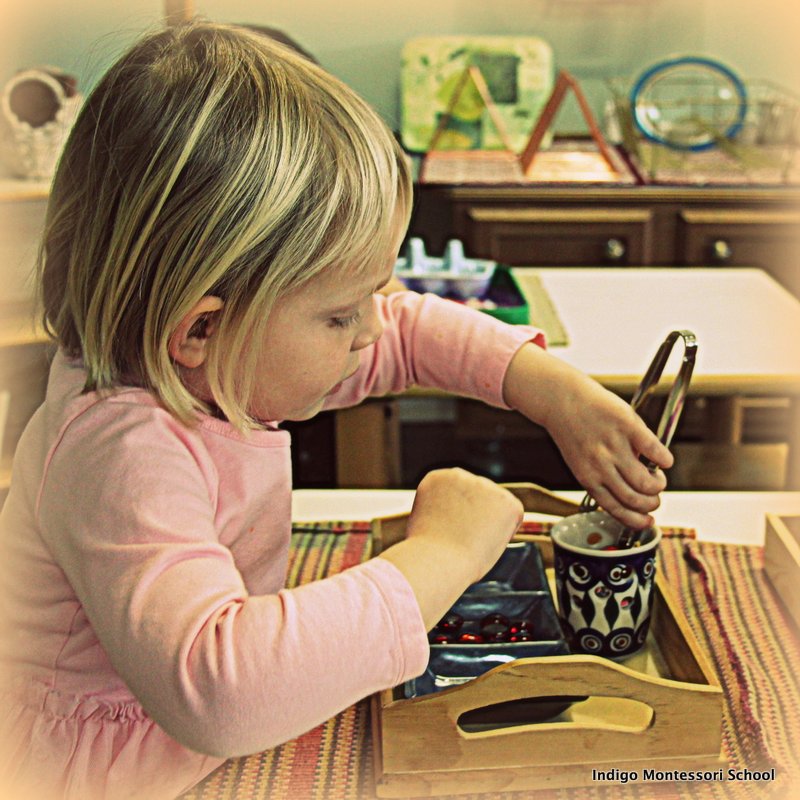

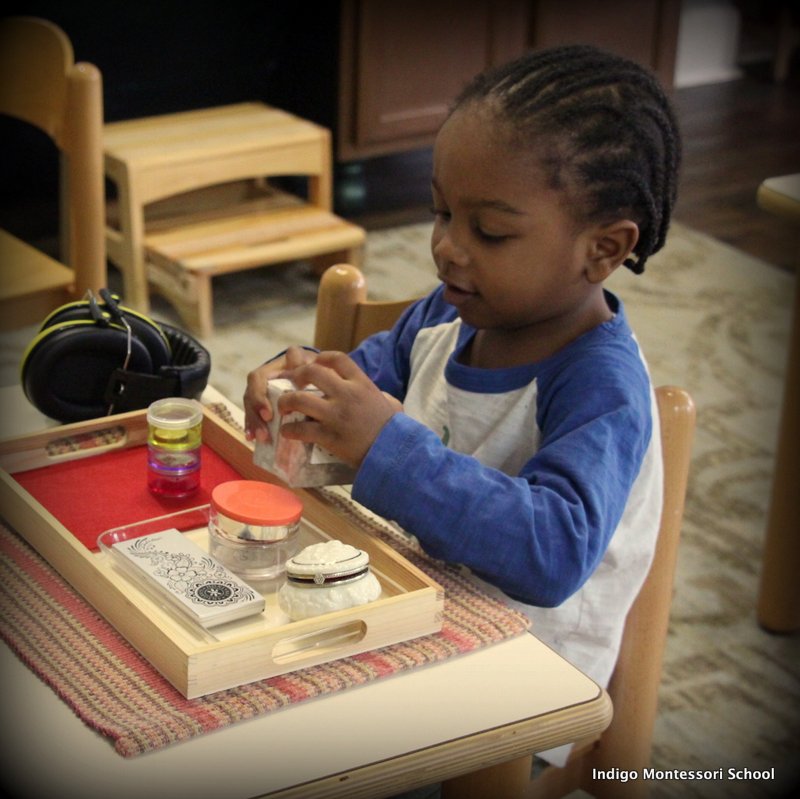
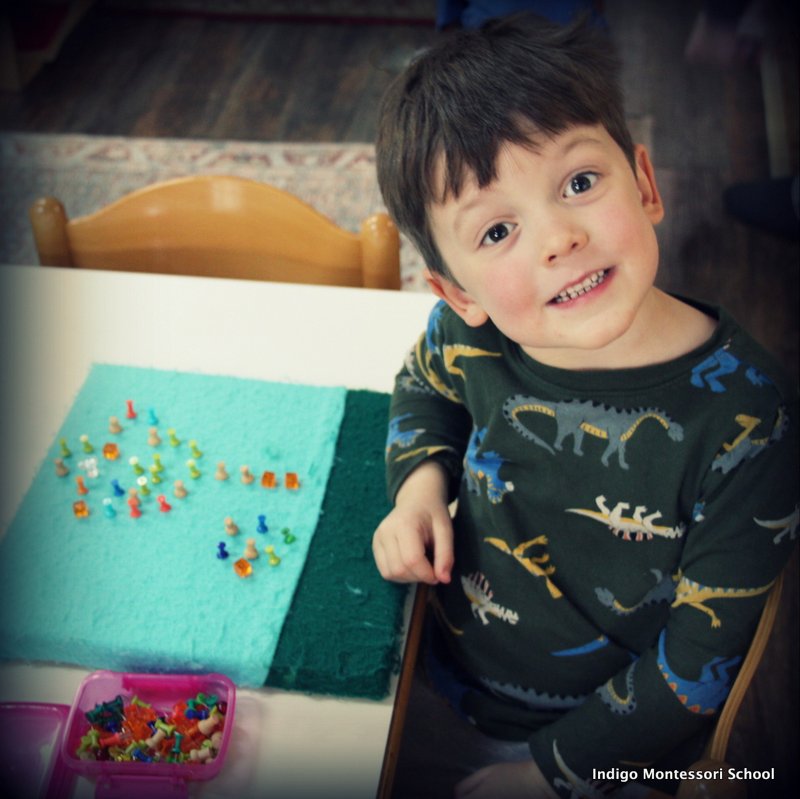
Thank you again for taking the time to learn more about the activity in our studio! This is such a proud, independent, and hardworking group, and we are truly grateful for the opportunity to work with your children and for your support along the way!

